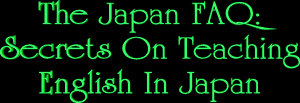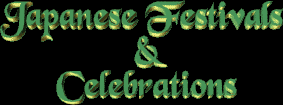
Best Pics of Fukuoka
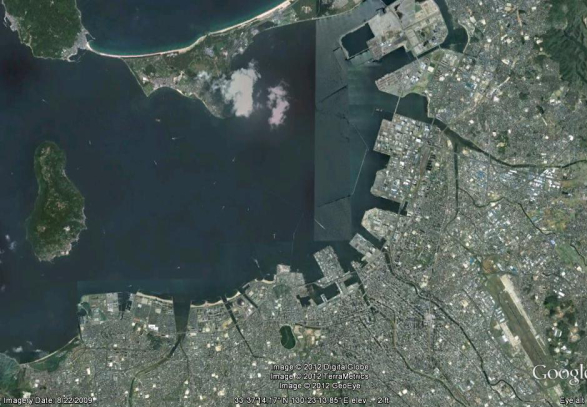
Welcome to a pictoral look at Fukuoka City. Hopefully these digital pics and videos will show you some of the delights of Hakata (the traditional name of Fukuoka).
Why Fukuoka?
Fukuoka is a nice, medium sized city of about 1.54 million people that is the largest in Kyushu, Japan's third largest island. It is consistently rated as one of the best cities in Asia to live, its climate is less extreme than other Japanese cities, and it has its own distinct culture as well as a wide variety of international people and foods. It's big enough to see a large number of interesting and historical places, as well as have most major nation's consulates, yet small enough to quickly and easily leave for the mountains and forests nearby. It has an excellent modern public transportation system, with a subway going straight to its international airport, yet avoids the concrete jungle feeling that overwhelms many larger Japanese cities. Fukuoka's women, called "Hakata Bijin" are nationally renowned as some of Japan's most beautiful, and it still has many old shrines, temples and festivals, some going back over 1000 years. Fukuoka is known as Japan's traditional gateway to Asia, being the conduit to China and Korea and importing many things starting from before the 3rd Century and onwards, including Buddhism, agricultural advances, calendar, philosophy, weapons, bronze works, and government organization. In fact many famous items in Japan like green tea, udon and soba noodles, and manju bean jam came to Japan through Fukuoka. Its people are friendly and welcoming, and it is not overrun by tourists like Tokyo or Kyoto. The laidback atmosphere, traditional regional foods, and beautiful historical sites makes it a wonderful city to visit as well as live in.
As you will discover from everything below, there is a lot to see. Go ahead and start browsing! Or if you're short on time, see the specialized itineraries, and recommendations for day visitors. You can also get more into on getting around and where to stay below. For those more interested in:
| Nature/Gardens: |
Temples & Shrines: | Nightlife: | Parks (Koen): |
| Nokonoshima | Nanzoin | Nakasu | Ohori Park |
| Nishi Koen | Gion Area | Tenjin | Nishi Koen |
| Minami Koen | Kushida Shrine | Oyafukodori | Minami Koen |
| Aburayama | Atago Shrine | Nishidori | Higashi Koen |
| Yusentei | Sumiyoshi | Odo Park | |
| Odo Park | Gokoku | Nokonoshima | |
| Rakusuien | Kashii-gu | Shikanoshima | |
| Fukuoka Botanical Garden |
Kurume | Kego Park | |
| Uminonakamichi Park | Dazaifu | Maizuru-jo | |
| Seinanmori no Kohan Park |
Higashihirao Park | ||
| Hanahata Engei Park |
Seinanmori no Kohan Park |
Mitoma | Hanahata Engei Park |
| Akizuki | Island City Park |
||
| Shofuen | Minato Hyakunen Park | ||
| Kurume |
| Shopping: |
Scenery/Views: | Culture/Cuisine |
Amusement |
| Hakata City | Aburayama | Nagahama | Uminonakamichi Seaside Park |
| Canal City | Fukuoka Tower | Nakasu | Marine World Uminonakamichi |
| Tenjin | Hakata Port Tower | Yamakasa | Fukuoka Zoo |
| Nishi Dori | Maizuru-jo | Dontaku | |
| Nakasu | Atago Shrine | Yanagibashi | Marinoa |
| Kawabata |
Nokonoshima | Maizuru-jo | |
| Konoha Mall |
Hakata City | Hiraosanso | |
| Yanagibashi | Sarakurayama | Hot Springs |
|
| Marinoa | Mongol Wall | ||
| Markis Mall | Museums |

For the 1 Day Visitor
Fukuoka offers a lot to see, but for those with just a day, here is a recommended itinerary. Many of these places are near subway stations, and you can save a lot of money and time by getting a subway day pass for 640 yen. The following also presumes that some but not too much time is used in shopping, browsing and eating.
As a starting point, let's use Hakata Station.
For the full day visitor (aprox. 8-10 hrs):
For the afternoon visitor (aprox. 5-7 hrs):

For those on the Fukuoka Visa Run
If you're coming in from Korea and looking for the Korean Consulate to get your visa to live in Korea, then these are the easiest routes to get there (aside from a taxi, which is pricey). Both use the subway with no transfers needed.
From the airport: Option #1 - take the free white shuttle bus from the international terminal to the domestic terminal where the subway station is. Option #2 - From the international terminal, take a direct Nishitetsu bus departing every 30 minutes going to Hakata Station or Tenjin, then get on the subway there. If in a hurry or worried about getting lost, then the first option will probably be better.
From the ferry wharf: Walk down Marine-Dori about 700m (8 minutes) to Nanatsu-Dori St., then walk west about 400m to Taihaku-Dori St. Turn left and walk southeast about 700m to the Gofukumachi Subway Stn.
If you do any sightseeing, get the 600 yen subway day pass. You need to get off at the Tojinmachi Subway Station, Exit #1. From there you need to walk west down Meiji-Dori St. about 300m (4 minutes or so) to the Jigyo intersection, then turn right and walk north about 400m (5 minutes or so) to the Jigyo 3-Chome intersection. To the right is the PayPay Dome and Markis Mall, and to the left is the Korean Consulate (open 9AM-12PM, then 1:30PM-5PM Mon-Fri, closed all Japanese and Korean holidays). Please check ahead of time, and remember you'll need to pay all charges in Japanese yen, in cash. If you want your visa by the following day, you need to get there during the morning hours. Address: Jigyo 1-1-3, Chuo-ku, Fukuoka City. Tel (092)771-0461.

Canal City
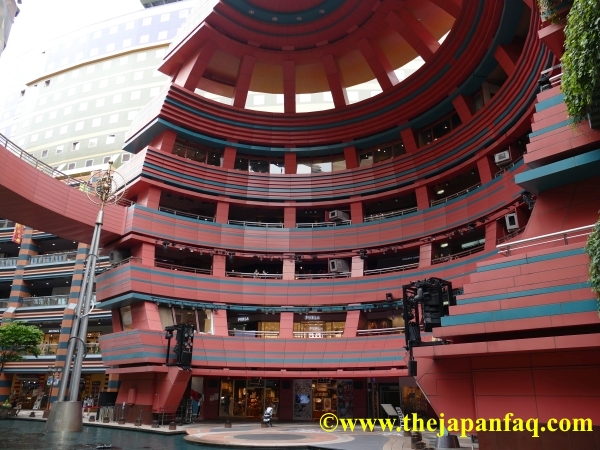
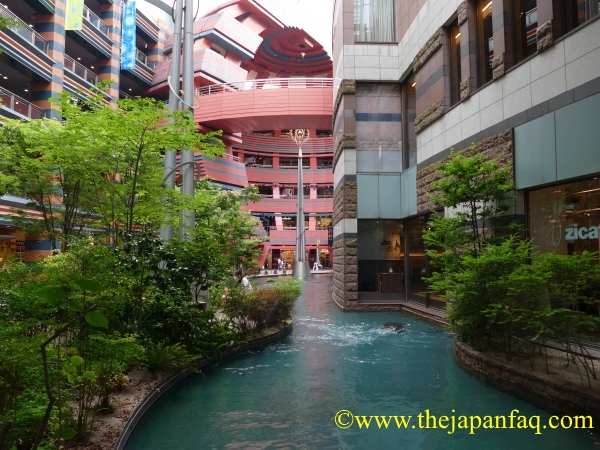
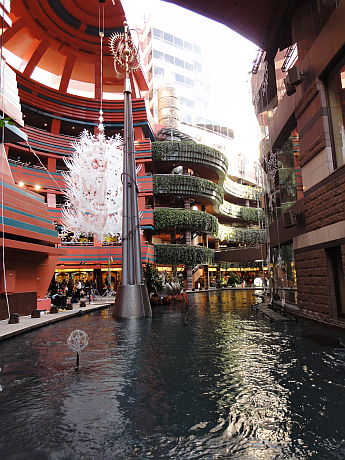
Canal City is one of the more recent developments in Fukuoka -- it was built in 1996 and based on an American shopping mall, and while limited due to tight land restrictions it has over 350 shops, cinemas, restaurants, and things outlandish. It is also next to the Hyatt Hotel. Canal City has a great selection of restaurants including a wide area of eateries specializing in ramens popular across Japan. AMC also has a large multiplex cinema there, and some discount computer shops are also there too. Canal City is about 7 minutes on foot from either the Nakasu-Kawabata or Gion subway stops. There is also the green loop bus that stops by. There is also paid parking for up to 1300 cars. The shops are open from 10AM-9PM and restaurants until 11PM (may vary by place). Address: Hakata-ku, Sumiyoshi 1-2; Tel (092)282-2525.

Tenjin
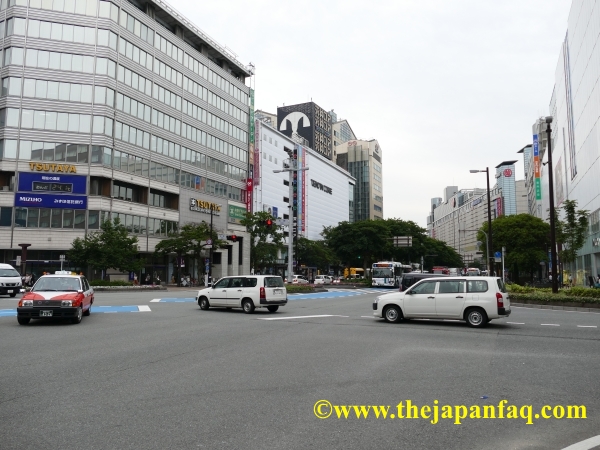
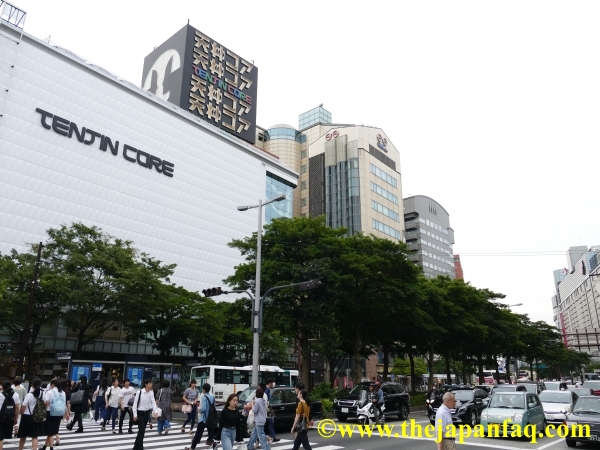
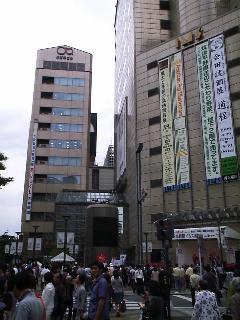
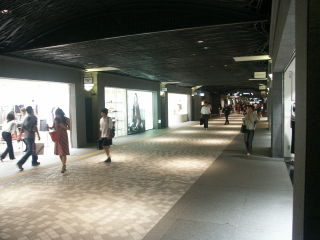
Tenjin is the heart of Fukuoka City, and virtually every bus or train you get on is either going to or coming from there. You'll find numerous department stores (all quite expensive), a large underground shopping area called the Chikagai which runs through most of the important street, the subway station, and the hangout of the young and the ex-pats on weekends and holidays....
Another busy shopping street is the Tenjin Shintencho, beside the Nishitetsu Tenjin Station, with people pouring through all day and evening.
And if you like, take a virtual walk down the Chikagai:

Oyafuko Dori
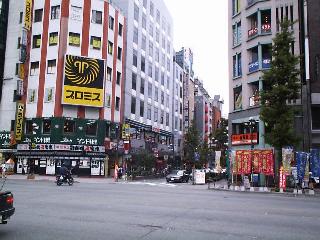
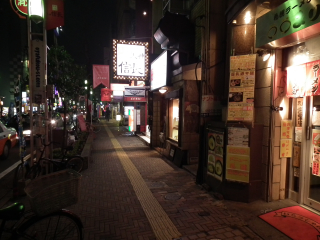
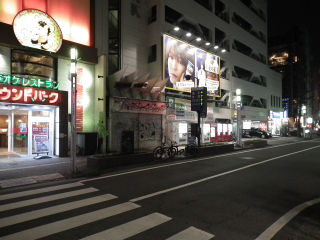
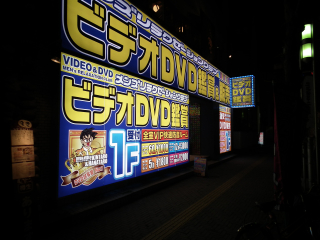
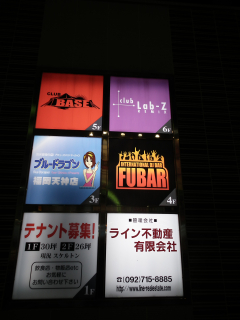
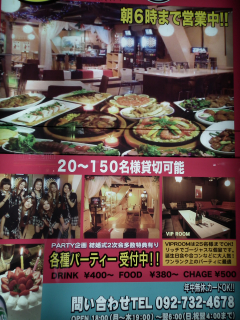
While puny and short compared to larger cities (it's only about 400 meters or 1300 feet long), you'll find quite a selection of bars, karaoke, ex-pat hangouts, game centers, and yatai (outdoor ramen stalls, which you will immediately notice by the stench of burning pork fat) here. It is also in Tenjin.

Nishi Dori
This is actually the same physical street as Oyafukodori, except it's separated by Showa-dori and Meiji-Dori. More of the same except for having a bit more room to breathe.
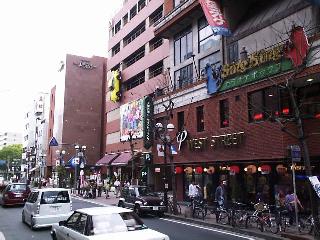

Kego Park
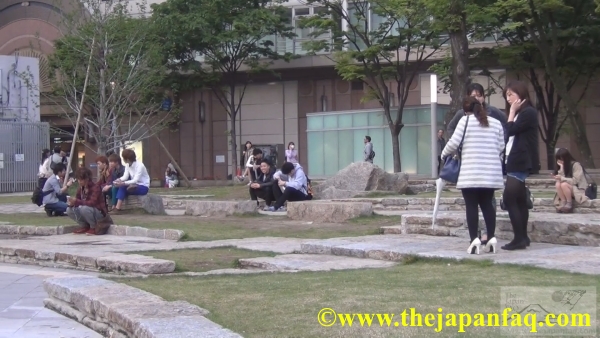
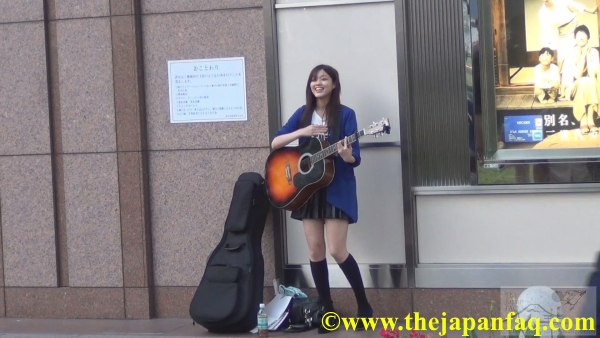
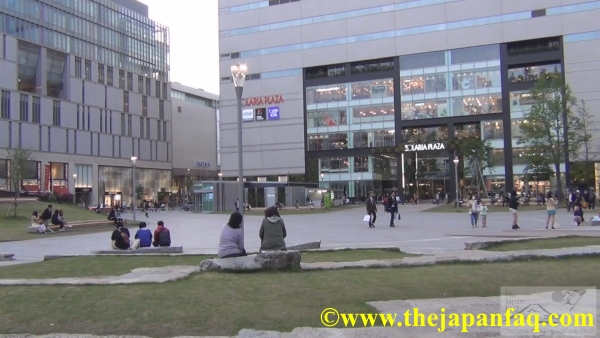
Kego Park is right next to the Solaria building, in the heart of Tenjin. It offers very little in terms of inspiring landscape architecture, blooming flowers or gardens most of the time, but its very location is a central point of rendezvous or a place to just chill a while and enjoy a snack or drink. It is frequently crowded in the daytime but there are usually enough places for people to sit down -- a marked contrast to larger cities like Tokyo. Next to it is also a small shrine, Kego Jinja, worth a peek if you have extra time or no time to go anywhere else. It also has a free foot bath (towels available for a fee). Address: Chuo-ku, Tenjin 2 Chome.

Nakasu
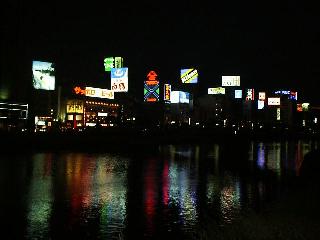
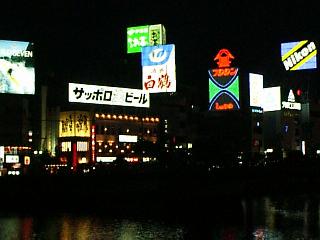
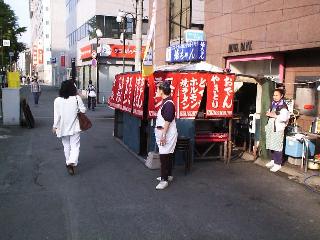
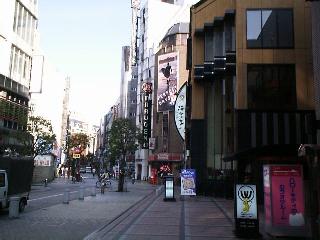
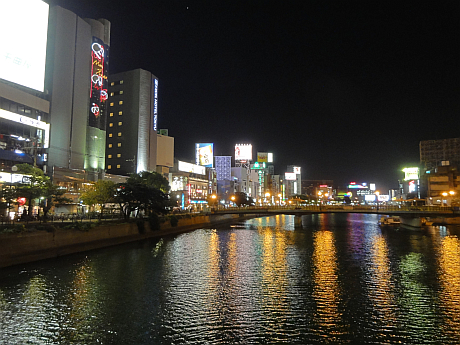
Nakasu is the red-light district of the city. Here you'll find a surving Taiyo movie theater from the 1940s (the newer theaters are in nearby Canal City, Hakata City and Tenjin), exhorbitant hostess bars, the sex industry, many outdoor ramen stalls (yatai) by the river at night, and basically where middle-aged Japanese business men go at night to entertain customers and drink their problems away. This area is one that has been hit hard by the recession. In fact, since its heydey the amount of neon has gone down by about 25%, since companies aren't spending as much for advertising in the flatlined economy, not to mention getting an insanely high electric bill every month. If things get better you might see more growth, but in the future you'll probably see more energy efficient LED lights than neon.
Nearby you can go to Riverrain or "Super Brand City" for wildly high designer brand goods shops, and in the summer a few "beer gardens" where you can drink your fill on the roofs of several large buildings. They close early though-- 10PM or so. It's small by Tokyo or Osaka standards, but gives a colorful view of neon on the water...

Kawabata
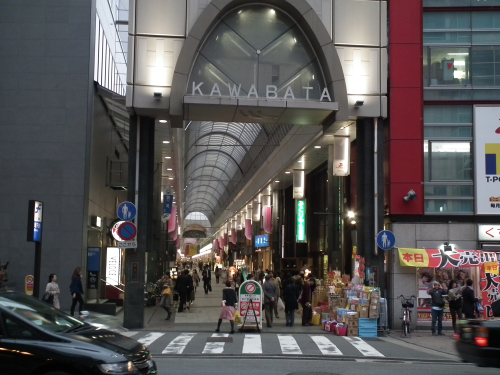
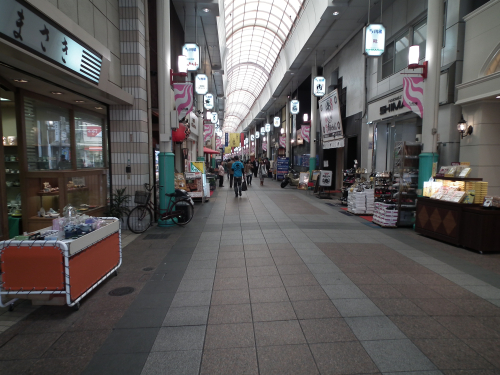
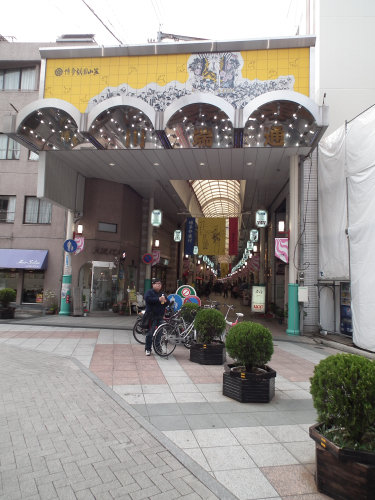
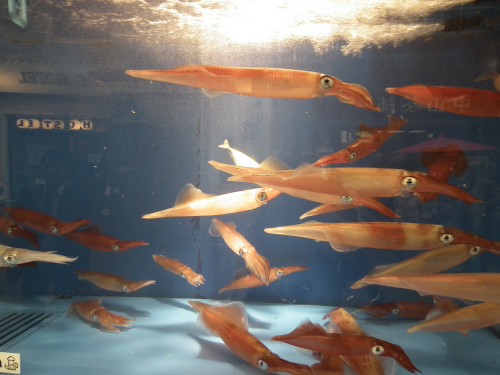
Before there was Canal City or other large shopping malls, there was (and is) Kawabata, an older, roofed pedestrian street with lots of shops and stores to browse through. Located next to Nakasu, you can get off at the Nakasu-Kawabata subway station and from Exit #6 you can easily run right into it.

Fukuoka Tower & PayPay Dome
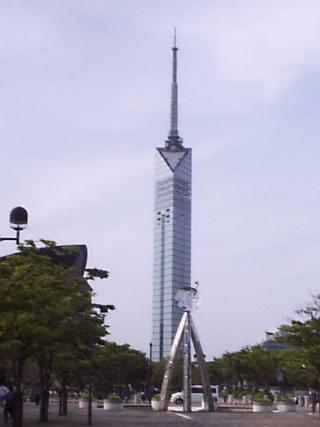

This is Fukuoka Tower, which is one of the biggest landmarks of the city. Completed in 1989, the 32 story, 234 metre (767.7 feet) tower offers a great view (for 800 yen to go up) and serves as the TV/radio tower for almost all the broadcasts in the city (one always wonders why they didn't put the tower on a mountain if they were going to do that). Next to it is another landmark, the PayPay Dome, which was used for the Softbank Hawks baseball team as well as some big concerts and special events. Newer to the area is the Markis Mall plus the Boss E-Zo Fukuoka complex (with TeamLab Forest, HKT48 Theater, Oh Sadamaru museum, etc). The tower is about 20 minutes on foot from the Nishijin subway station, or there are direct buses from Hakata Station and Tenjin. It is open 9:30 AM- 10 PM April-Sept and until 9 PM Oct-Mar (entrance closes 30 minutes before closing time). The tower gives a very nice view of the area provided the weather is good but you needn't pay money to get much of the same; you can always go to the top of the nearby 35 story Hilton Hotel next to the Dome, or the Hakata Port Tower (not nearly as good a view, but free; see below). If you still want to go up the tower, you can get a free 20% off discount card Fukuoka Welcome Card, available at the JR Hakata Station information desk, Fukuoka Convention & Visitor Bureau (1-10-1 Tenjin, across the street from City Hall) or Rainbow Plaza which is in the IMS Building (8th floor) in Tenjin. To get there, if going by subway you need to get off at the Tojinmachi or Nishijin station and walk north about 20 minutes toward the ocean, or catch a 9 minute bus ride from Nishijin Palace. Alternatively, catch a bus from Tenjin (Tenjin Bus Center Mae 1A bus stop; Nishitetsu Bus Nos. 300ís, 14, 44, 151, 152 or 200), Hakata Station (the 1st floor Kotsu Center No. 5 bus stop; Nishitetsu Bus No. 300ís or 39), or the airport (Nishitetsu Bus No. 39). The green loop bus also stops there. At any rate, these are the de facto landmarks of the city--and you can't help but notice them when you fly into Fukuoka on a plane.... Address: Tower: Sawara-ku, Momochi-hama 2-3-26; Tel (092)823-0234 - Dome: Chuo-ku, Jigyohama 2-2-2; Tel (092)847-1006
Bayside Place is a recently renovated dock for Fukuoka, and the international ship port where the ferry and hydrofoil (the Beetle) dock for landing on the other side. Here you can take a boat tour around Hakata Bay, go up the 73 meter Hakata Port Tower (and it's actually FREE), or see a
massive 9m diameter and 8m high indoor aquarium with 1 meter-long fish, giant sea turtles, eels, and baby sharks swimming around inside (and NO, the shark doesn't eat the other fish in the tank).
There is also a duty free shop, souvenir shops, fish and sushi supermarket, themed restaurant, hot spring place (Namiha no Yu), and kids activity center.
Also it offers itself as a large free wi-fi hotspot for people who want to get online.
It's about a 20 minute walk northwest towards the ocean from either the Nakasu-Kawabata or Gofukumachi subway station. From either station, take exit #6 and follow the river or any street parallel to it. Or by bus, from Tenjin take Nishitetsu bus #49 or #90 for 15 minutes and exit at Hakatafuto; fare about 180 yen. From Hakata Station take bus #46 or 99 for 25 about minutes and exit at Hakatafuto; fare is about 220 yen.
Both are open 10AM-10PM (last tower entry 9:40PM). Address: Hakata-ku, Chikko Hon-machi 14-1; Tower Tel. (092)291-0573, Bayside Place Tel (092)281-7701
Ohori Park is arguably the most beautiful park in the whole city. It
was actually a reclaimed area modeled after the West Lake in China, and was opened in 1929. It
offers a large pond, a 2km jogging track around it, a beautifully sculpted
island in the middle, and lots of space to breathe. Both daytime and
nighttime offer a wonderful, open atmosphere. Also available to rent are swan boats, row boats, and water striders (a bicycle on 2 pontoons) between March and November; weekdays 11AM-6PM, weekends 10AM-6PM (last entry 5:30PM). Note that only the northern part of the lake is open for boating.

Hakata Port Tower & Bayside Place
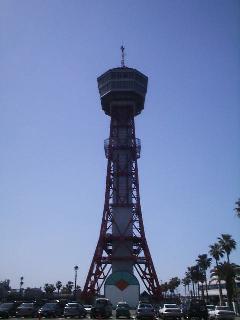
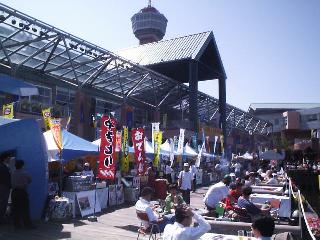
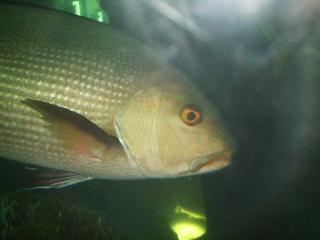
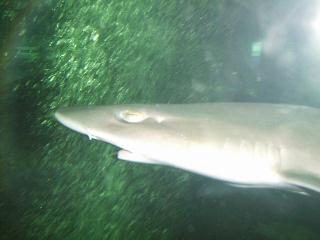

Ohori Park
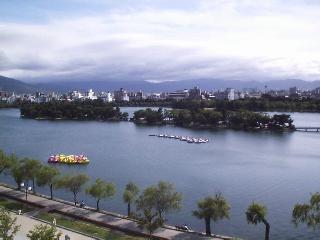
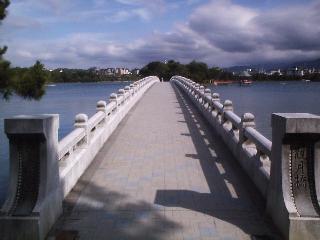
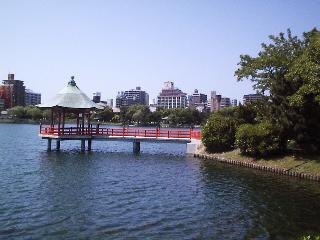
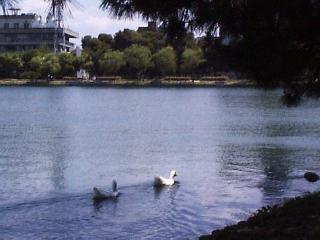
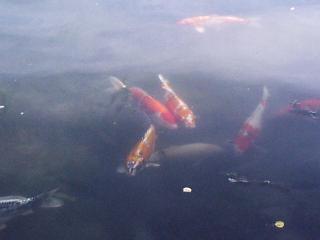
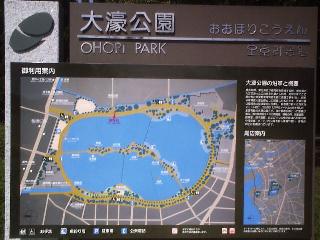
| Rates (as of Jul. 2014) | 1st 30 min. | Each additional 10 min. |
|---|---|---|
| Swan Boat | •1000 | •300 |
| Row Boat | •600 | •200 |
| Strider (single) | •800 | •250 |
| Strider (tandem) | •1200 | •400 |
There is also an annual fireworks festival there every August--expect a tsunami of people to come in for it.


Ohori Park Japanese Garden
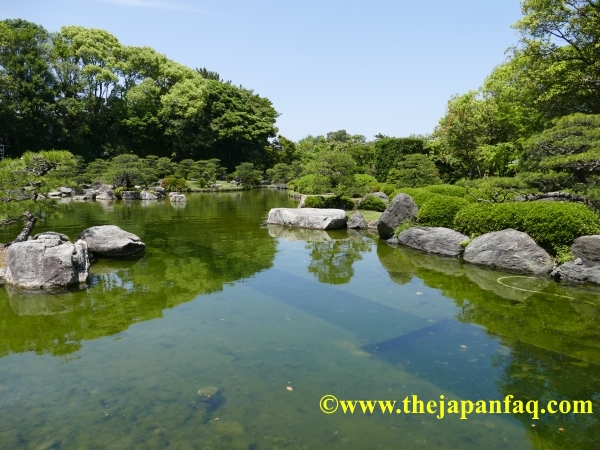
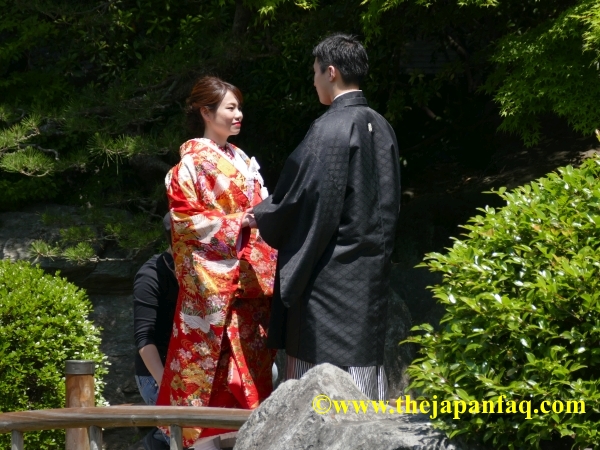
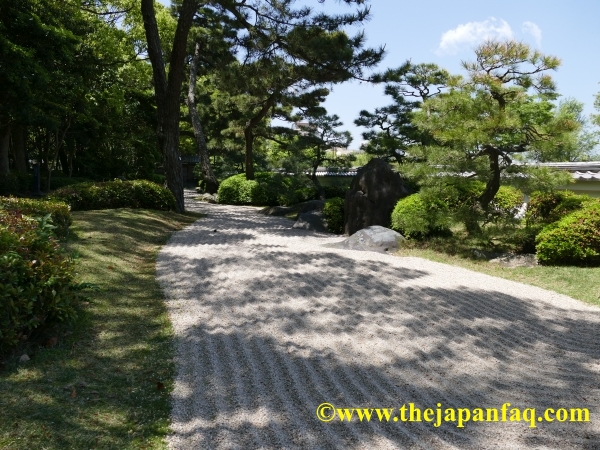
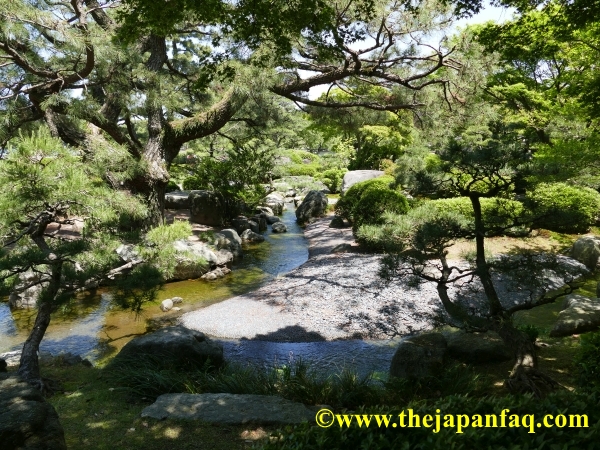
While visiting Ohori Park, don't miss the beautiful traditional Japanese garden that is there also. Actually many do miss it, so there are few crowds to deal with and on a weekday you can nearly have the whole place to yourself. The garden is open 9-5 (Jun-Aug 9-6) and is closed on Mondays. Entrance fee: •240.
Maizuru-Jo and Park
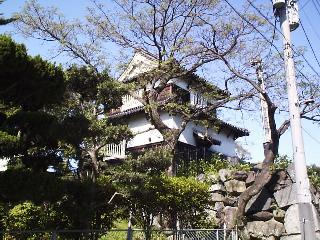
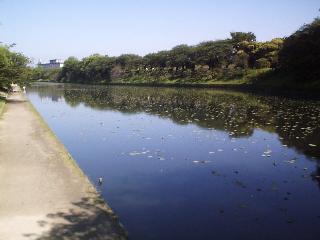
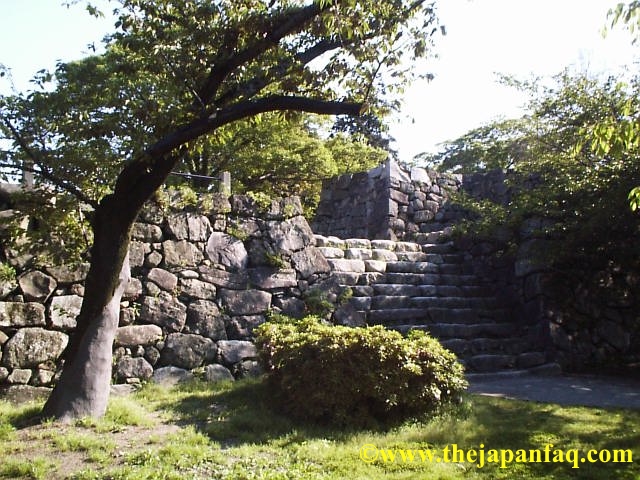
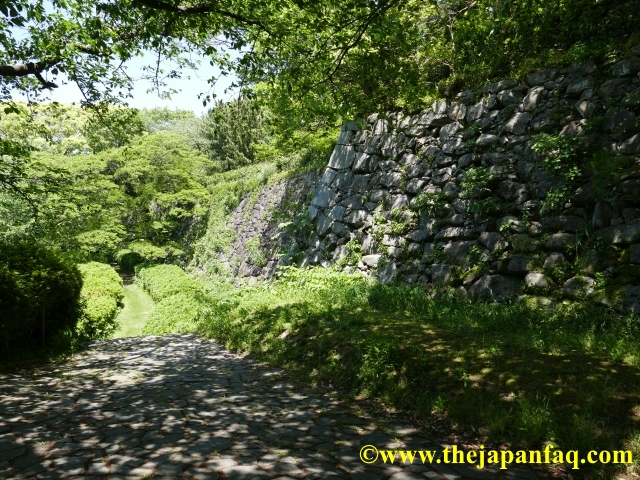
If there is one thing that Fukuoka City doesn't have, it's a beautiful historic castle. It did long ago, built in 1601 by Nagamasa Kuroda, but now all you can see are its remains. Even so, you can walk by the castle moat, and into what used to be inside the castle (Jo-nai) to get a pretty good idea of what existed, and its strategy of keeping invading armies out (it was never needed for that though, as history turned out). You'll also find VERY few people who go inside, surprisingly, and is a nice place for a picnic or afternoon snooze. With around 1000 trees, it is also one of the best places to see the cherry blossoms (usually late March to early April) in the city. It is next to Ohori Park, and closest to either the Ohori-Koen or Akasaka subway station, about 8 minutes on foot. Tel.(092)781-2153
Also close by Ohori and Maizuru-Jo (just walk north ten minutes from the Ohori subway station) is a hillside oasis
that makes you feel you left the city and went into the forest. Nishi Koen, or literally West Park, is a quiet and
open park with lots of space to stretch out and relax, as well as offers the Terumo Shrine and a good view of the city and ocean. It's also one of the best places in the city to see the cherry blossoms every spring, in fact it is listed as one of the Top 100 cherry blossom spots in Japan. With over 1300 trees in bloom, it will be filled with big crowds welcoming the end of winter through big drinking parties and karaoke going into the wee hours of the morning.
Abura Yama has the best night view of the whole city -- and if you have
the chance to see it, then it's well worth the trip. The Katae Tenbodai observatory by the top
is 597m high and on a clear day you have a 120 degree view of most of the city and bay.
There is no direct way to
get there except by car or motorbike though, and on weekends especially
you'll find so many other cars there that parking will be tough if not
impossible (no charge though). Along the way up the mountain you'll find
a whole row of cars parked along the road with couples inside [actually
they all say they're there for the view but I never see any of them
actually looking out at the city ;-) ] as well as the most expensive
"love hotel", Shiro, there too. The area also offers a 70.7 hectare hiking park called
Shimin no Mori as well as
a ranch called Moo-Moo Land, with cows and the freshest ice cream you can eat. And while hard to access, it also has a good display of about 2000 cherry blossom trees usually starting around the end of March.
You can reach it by taking Route 557 starting from Tojinmachi station
(or Route 202 which will merge with it) and head south all the way up the mountain until the end of the road.
For those without a car, you can take express bus No. 13 from Tenjin or No. 113 from Hakata Station to
Aburayama Danchiguchi. From there you can walk up an hour to the Shimin no Mori or take a taxi (10 min; apr. 1500 yen). On weekends there are infrequent buses leaving ever 90 minutes or so. See the schedule for leaving from the
Aburayama Danchiguchi here.
For the Shimin no Mori: address: Minami-ku, Hibaru 855-5; Tel (092)871-6969 Open daily 9AM-6PM, admission free.
How many other places can you go and have a beach BOTH on your right and your left? Shikanoshima, or "Island of Shika" is an "island" connected by an 8km isthmus or sandbar (Uminonakamichi) that together outline
Hakata Bay. As you go down the 8km (5 mile) Uminonakamichi you'll find it has a lot to offer, including a few
small amusement parks, scenic parks, and. swimming. Uminonakamichi Seaside Park is there and from late March turns into a colorful cherry blossom spot with over 2000 trees, as well as roses in summer and fall and cosmos flowers in autumn too. The isthmus also has Chili Joe (Nata 1-11-10, tel 092-608-2828, closed Thu.), the best Tex-Mex
restaurant that Fukuoka has to offer (go 1 km west past the railroad crossing, til you find a Lawson's; there is one other
Mexican restaurant near Tenjin, El Boracho, at 2-3-2 Daimyo, 092-720-5252). Shikanoshima has Mokozuka, a small grave site of some 120 Mongolian invaders from 1274 (they were captured and beheaded), as well as Kin-In Park where a gold seal from a Chinese Emperor was lost and re-discovered. Yet if you only go down Uminonakamichi you'll also miss one of the best sites - an observation deck in Shiomi Park in the middle of the hills with a grand view of the whole bay and ocean. The island also offers a nice shrine called Shikaumi Jinja, a hot spring hotel, and a small museum of Mongol and other artifacts. You can catch a 30 minute ferry there from the Hakata Wharf, or take a train that goes around the city and onto the sandbar up to Saitozaki, or a one hour bus ride from Tenjin. There is also a 20 minute daytime boat ride from Momochihama (near Fukuoka Tower) for about 1000 yen each way to Uminonakamichi, departing once an hour or so weekends and every 2 hours or so on weekdays. There is a bus that goes around Shikanoshima, but runs only once per 2 hours or so. There are also 2 beach areas on the northeastern part of Shikanoshima, Katsuma and Shirase, neither of which is too crowded compared to elsewhere. Katsuma has more of the powder sand beach; Shirase is more rocky and offers snorkelers a new adventure. By bus from Saitozaki it takes about 30 minutes to Kyukamura at the tip of the island - by car is the most convenient way to see the area.
If you have the time and want to do a bit of hiking and see some gardens, then Nokonoshima awaits. It's in Hakata Bay
and about a 10 minute ferry ride (about 5km, or 3 miles), or less by speedboat from the Meinohama Port. The island
also offers some camping. The return boats shut down service before 11PM though, so be sure to find out
when the last boat leaves and don't be late! You can walk there from the Meinohama subway station about 20 minutes, or
you can get a bus from there, or from the Tenjin Bus Center.
Here are some guides on the islands and ferry schedules (in .pdf):
Guide 1 - Guide 2 - Guide 3 - Noko Flowers - Noko Park Map
Minami Koen (literally "South Park") is a hilly area in the middle of Fukuoka City that is most known for
the city zoo and botanical garden. But it has a lot of hills covering 10 hectares with 190,000 trees to explore, has a spectacular observation point to
see the city, and with over 1400 sakura trees is one of the best places to see the cherry blossoms in the spring. The botanical garden has over 2,600 kinds of plants and flowers, and the zoo has over 160 animal species. Open 9AM-5PM. Access: By bus: From
Tenjin or Hakata Station take Nishitetsu Bus #56, 57, or 58 and exit at the Dobutsuenmae or the Taisei Kokomae bus stop.
On foot: Closest from the Yakuinodori subway station, then walk southwest down Josui Dori about 850m (about half a mile)
into the park.
Or, if more interested in the observatory, then from the Sakurazaka subway station walk south past the 7-11
and up the hill to the observatory. When the weather is clear it offers a great view both during the day and
at night. For those unable to make it to Aburayama this place is a good substitute. There is also a paid parking lot but only open during the day.
Every July 15 in Hakata is the 750 year old Yamakasa festival, held just after the crack of dawn. But if you think
no one would go to see it at such an ungodly hour you'd be in for a big surprise. There is always a
huge crowd of up to 1 million spectators, as several of the 1 ton floats you see here are carried by a large group of men
calling eachother and racing to see who can carry their float fastest. Whether you choose to stay up
all night or get up way early in the morning, it's well worth a look and is a uniquely Fukuoka
event.
If you wish to see the effort and ceremony in making one of these floats, see this:
While not the largest and most impressive of shrines, Kushida is one of the most famous shrines in Fukuoka, and
is the starting point of the Hakata Gion Yamakasa festival. According to tradition it was built in 757 A.D. and Hakata's
two major annual festivals, the Yamakasa as well as Dontaku Festival are both dedicated to Kushida Shrine. Inside the
shrine you can also see on the ceiling a picture of the Chinese zodiac as well as an old ginkgo tree, which is a national
monument. The main hall is open from 4AM-10PM. It is only 5 minutes on foot from the Gion subway stop. Address: Hakata-ku, Kamikawabata-machi 1-41.
One of Japan's most famous items is its great Buddha statues, particularly the Todai-ji in Nara and also
Kotoku-in in Kamakura -- and not to be missed. But did you know Fukuoka City has its own great Buddha statue?
That's OK, almost nobody in Japan or even Fukuoka knows either. The great Buddha is in the Tocho-ji temple, and
in contrast to bronze, is made of wood. It stands 10.8 meters (35.4 feet) tall, weighs 30 tons and well worth a visit - which
unlike the other statues is free. It took four years to carve and was completed in 1992.
The temple was established in 806 A.D. and is the oldest Shingon sect temples in Kyushu. It
is in the Gion area -- along with several other temples and shrines in the area to see, including Shofuku temple nearby,
which is Japan's oldest Zen Buddhist temple. In fact there are over a dozen temples in the same area. Another famous shrine in the Gion area is Sumiyoshi Shrine, and Rakusuien Garden
right next to it. All are a few minutes walk from the Gion subway stop. For Tochoji and Shofuku temples, take the subway exit #1. Address: Hakata-ku, Gokusho-machi 2-4.
Just across from Sumiyoshi Shrine on the north side is an example of a traditional Japanese garden; this one was a wealthy merchant family's 2nd home and was built in 1906. It also has a traditional Japanese tea room, and you can enjoy a cup of green tea and traditional sweet, just as the original owners did over a century ago.
Address: 2-10-7 Sumiyoshi, Hakata-ku (12 min on foot from Hakata Stn., or 2 min. on foot from the TVQ-Mae Nishitetsu loop bus stop; or 7 min. on foot from the Hakataekimae 4-chome Nishitetsu bus stop or 5 min. on foot from Sumiyoshi bus stop). Admission: 100 yen; closed Tuesdays, open 9AM-5PM. Tel:092-262-6665.
Another wonderful site that many people should see is Atago Shrine, which offers from the
top of the 68m Mt. Atago a spectacular view of the western area of the city, as well as
Hakata Bay and Fukuoka Tower. You can also get an excellent view of Nokonoshima and
Shikanoshima when the weather is good. This shrine is said to be the oldest in Fukuoka
City, going back to the year 72 A.D., and until 1901 was known as Washio Shrine. While
there are over 900 Atago Shrines across Japan, this one is the 3rd most important after
the ones in Kyoto and Tokyo. Unfortunately, this wonderul site is nearly completely
overlooked or ignored by the most popular travel and tourism books and guides. Entrance
is free and if you have the time is definitely worth a visit. There are also many smaller
shrines nearby on the way up. Some of the best times to visit are usually late March to
early April during cherry blossom season, with over 2000 cherry trees that are also
illuminated after the sun goes down, as well as usually from late November when the autumn
leaves change color. The first week of the year is also very active with over 700,000
people visiting the shrine. It's also a popular place for couples on dates looking to
get away from the crowds. From 1928 to 1943 there was a popular cable car going up to
the top, but was closed to use the metal in Japan's war effort.
Just get off the subway at Muromi Station (Exit #1 or 6), walk west 4 minutes across the bridge and
take the stairs going up on your right when you see the stone torii gate. By bus it's a 5 minute
walk from the Atago-Shita bus stop. If you want, there is a winding road which you can take instead
of the stairs. Address: Nishi-ku, Atago 2-7-1; Tel. (092)881-0103
Way off in the western area of Fukuoka City, about 25 minutes on foot (5 min by taxi) northwest of Meinohama Station lies
Odo Park by the water, and offers a great view of the water and lots of room to walk around. It was established in 1942, and there is some paid parking there (charge 100 yen/hour; max 500 yen) but on weekends may be full; there is also a yacht harbor next to it with paid parking (100 yen per hour). It's especially good for kids to run around, take a few short hikes, enjoy the ocean view, see the Ododai Shrine, and watch the sunset over the water.
If going on foot from the station you can also stop by Kotoku-ji, another famous Rinzai Zen temple. The park also
offers a large grass field, baseball diamond, BBQ area (charge 100 yen/person), and play gym for younger children.
Open 9AM-5PM Oct-Mar; 9AM-7PM Apr-Sep. Address: Nishi-ku, Odo 2-1855-1; Tel. (092)883-3510.
Just past Oyafukodori towards the ocean, you might notice a pungent combination of butane gas and burning pork fat. Most
likely that is coming from Nagahama, a street with a huge collection of Hakata ramen stalls and small restaurants. Hakata people
take great pride in their ramen, which is based on a pork soup broth and noodles, and often not much more. Along the Naka
River in Nakasu at night you will also see a long series of stalls called yatai, but Nagahama is more where the action is
at (though they can't compete with the river and bright lights).
Here's a look at the Nakasu Yatai:
Up to now you may have noticed that most interesting sites are around the northern part of the city.
But the southern area has a few great places too, hardly mentioned elsewhere. One of them is a relatively
new park officially opened in 2008 and is a stone's throw from Fukuoka University's main campus. At
Seinanmori no Kohan Park
there are sports fields, a bamboo grove, large ponds, playgrounds, open fields, cherry blossoms in spring, and a habitat for at least
12 kinds of wild birds. Its carefully scupted landscape and flowers also make it a beautiful sight. Unlike
some other parks though there are more rules; the park is open Oct-Mar from 9AM-5PM, and Apr-Sep 9AM-7PM. Bicycling
through the park is not permitted, nor BBQs or fireworks. Access is easiest by either the Nanakuma Subway Line, 5 minutes on foot
(about 450m) from the Umebayashi Subway Station (use Exit #1), or 7 minutes on foot (600m) from the Nanakuma Subway Station (take Exit #2).
Address: Nanakuma 6-Chome, Jonan-ku; Tel. (092)863-7929.
Sitting on what used to be a prefectural government agricultural research site, Hanahata
Engei Koen (Park) was officially established in 1984 and proves again that while not famous like a lot of older places in the
northern half of the city, it has a beautiful natural character unique to itself. It is called a park of flowers and fruit trees, 14.7 hectares large, with
over 1300 fruit trees that in season you can pick yourself to buy. It even has a hothouse with 70 kinds of tropical fruit.
In addition, it has a wide open lawn, a rest house, a flower field, fountain area and observation area of
Fukuoka City.
Access: One of the easiest ways is by Nishitetsu Bus #59, from the Tenjin Core or Yakuin Station bus stop (buses run every 40-60 minutes
depending on the day). Or from Hakata Station get on the bus bound for Kashibara Eigyosho, and exit at the
Hanahata Engei Koen Iriguchi (about 55 minutes). Parking is available for 300 yen. Entrance free, open 9AM-5PM, closed Mondays.
Address: Kashibara 7-571-1 Minami-ku; Tel. (092)565-5114.
If you thought that there'd be nothing at the end of the new Nanakuma subway line and the only benefit is
easier transportation for those living there, here is a surprise: a new large American style shopping mall
with rows of shops for the spendthrift masses. For Japanese standards it is quite large and bright, and easy to get
lost in the massive parking lot at the top. It doesn't have the personality and charm of Canal City, but even its
vanilla character is a sharp contrast to the older pedestrian shopping streets that are still around. The easiest
access is through the subway to the final stop at Hashimoto Station; from there it's a walk across the street.
Higashihirao Koen (Park) or "Hakata-no-Mori" is just east of the airport with a large focus on sports. It is a large 94
hectare park that has the Level-5 Stadium holding 22,000 people and home of the Avispa Fukuoka soccer club.
There is also an olympic size swimming pool, gymnasium, aerobics studios, tennis courts, ice skating facility (Nov-Apr), plus outdoor slides
and gym for children. Most facilities require a small fee. In springtime there are also over 1700 cherry blossom trees
in bloom. Access: By subway, take Exit#4 at the Fukuoka Airport Station; or by bus take
Bus 39B to the Higashi Hirao Koen-iriguchi bus stop. Address: Hakata-ku, Higashihirao-Koen 2-1-2; Tel 092-611-1515
While technically not in Fukuoka City itself, Nanzoin is only 20 minutes by train from Hakata Station in Sasaguri Town.
This temple is so fantastic and so unknown it should be classified a state secret. Here you will find one of the
largest bronze statues in the world, and few people in Fukuoka have ever heard of it. It is well worth the extra effort
to see it. From Hakata Stn. take the Sasaguri Line (usually Platform #8) to Kido-Nanzoinmae Station, from there go left and it is 3 minutes on foot. Admission is free (500 yen to go inside the statue).
[1035 Sasaguri, Sasaguri-machi, Kasuya-gun; Tel. (092)947-7195]
Yusentei was a villa for the 6th lord of Fukuoka, Kuroda Tsugutaka, built in 1754. While normally such places were taken down after someone died, this one has survived, and offers a beautiful look at a traditional pond, garden, and home. It has been open to the public since April, 1981, covering about 1 hectare with a 1500 sq. meter pond. Like many scenic gardens in Japan it was made as a "chisen kaiyu-shiki" or pond stroll garden. There is also a tea house where for 300 yen you can relax with a cup of green tea. It is between Ropponmatsu and Aburayama, about 1 minute south on foot from the west side of the large Daiei Sasaoka store, by the river. Easier access is by bus: from Hakata Stn. or Tenjin, take Nishitetsu Bus #12 or #12-1 to the Yusentei bus stop, and walk 5 minutes. By subway, while closer to the Chayama Station, the twisted residential roads between the station and garden are hard to navigate, so it is easier to find from the Ropponmatsu Stn.: either catch the Bus #12 or #12-1 from Ropponmatsu Stn. or walk south down Aburayama Kanko-Doro 25 minutes until you see the Daiei. Address: 1-46 Yusentei, Jonan-ku. Admission: 200 yen; closed Mondays and the end/start of the year, open 9AM-5PM. Tel:092-711-0415.
One of the newest developments of Fukuoka is Hakata City, a large expansion of the Hakata train station into a giant
shopping mall, with scenic views from the building roof, as well as lots of restaurants and stores. It opened in March, 2011 and
previously was just a humdrum train station that looked like so many others in Japan. But with the bullet train line completed and
going all the way to Kagoshima, there needed to be a little more reason to stop by Fukuoka City rather than just go rolling right on
through. It is giving Tenjin a little more competition as a hot spot of the city and well worth looking through if you have the time.
Shofuen, opened to the public in 2007, is a garden and former home of the owner of the Tamaya Department Store, built in the early 1950s. You can see the former residence's tea rooms and Japanese style garden. Entrance fee: 100 yen. For 300 yen more you can enjoy some traditional green tea by the garden, just as the owner once did. Address: Hirao 3-28, Chuo-ku, open 9AM-5PM, closed Tuesdays. Tel:092-524-8264. It's 15 minutes uphill on foot from the Yakuin Odori Subway Station (exit #2), or 15 minutes from the
Nishitetsu Hirao Stn. By Nishitetsu bus it's 8 minutes on foot from the Kyuden Kinen Taiikukan-mae stop.
While maybe not at the top of the list, for those with more time there are some other places to see according to your interests.
On the south side across the street from the Rakusuien Garden is Sumiyoshi Shrine, and while you will find over 2000 Sumiyoshi Shrine across Japan, this one was the first and one of Kyushu's oldest. Its history goes back to at least the 8th century, and the architecture is noteworthy for its "Sumiyoshizukuri" style, which is older than when Buddhism was brought into Japan from Asia and influenced Japanese building techniques. Its main hall was rebuilt in 1623. Address: 3-1-51 Sumiyoshi, Hakata-ku. Directions: see above for Rakusuien. Tel: 092-291-2670.

Nishi Koen


Abura Yama
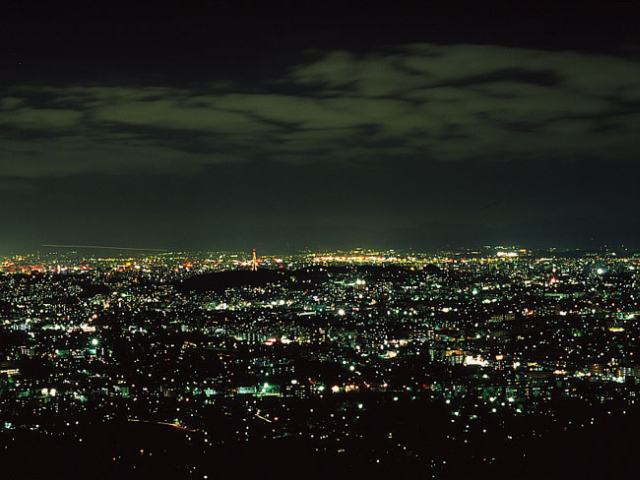
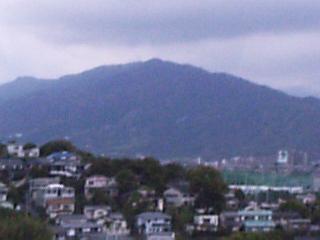

Shikanoshima & Uminonakamichi
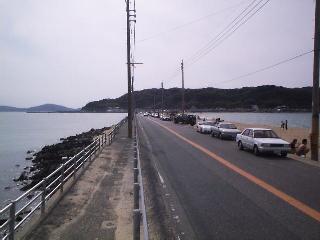
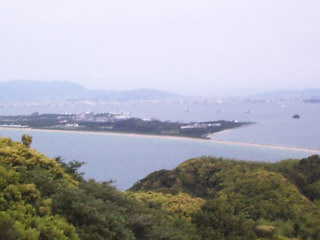

Nokonoshima
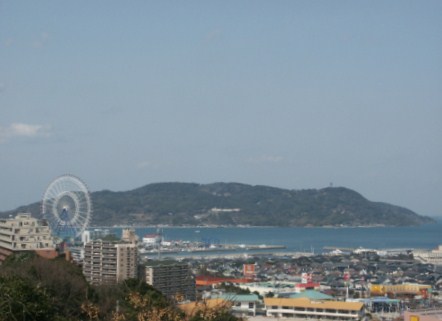
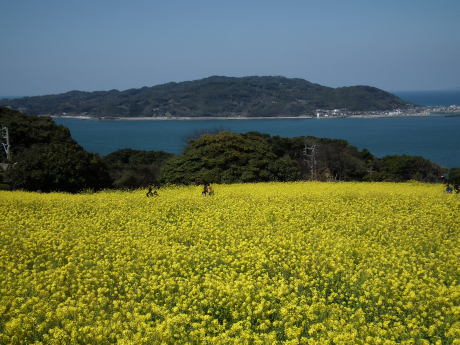
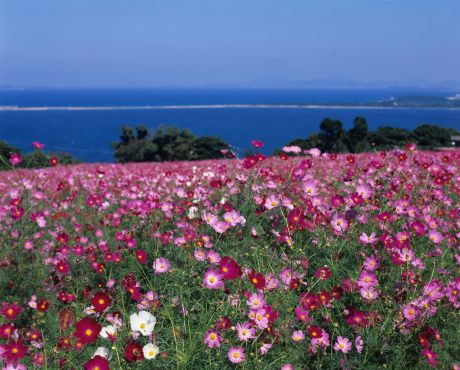
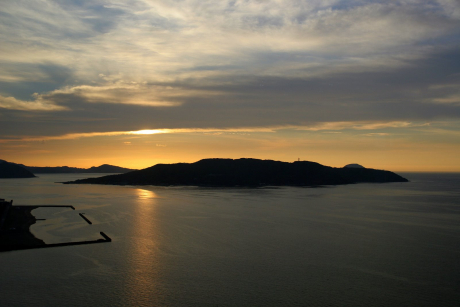

Minami Koen
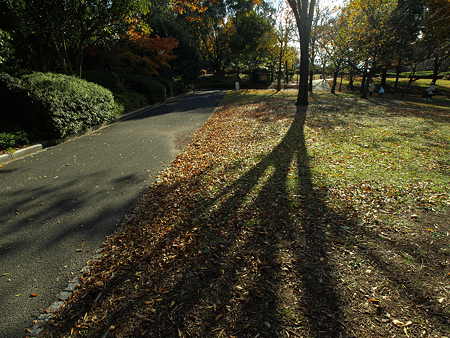
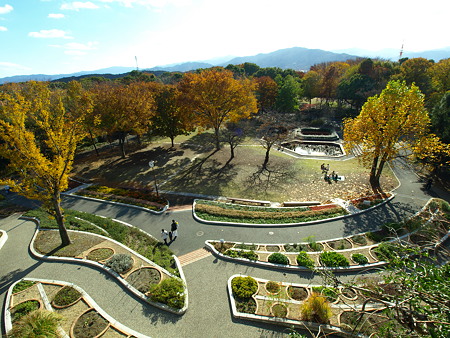
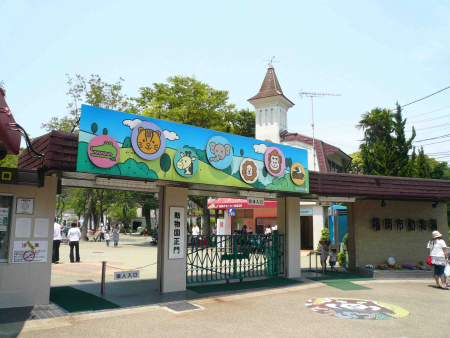
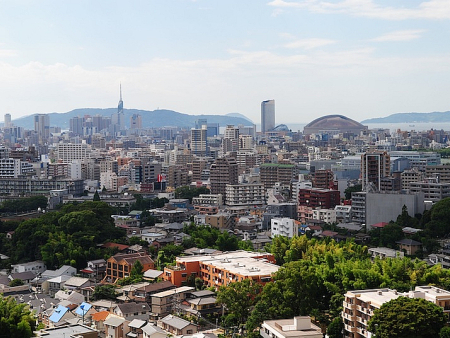
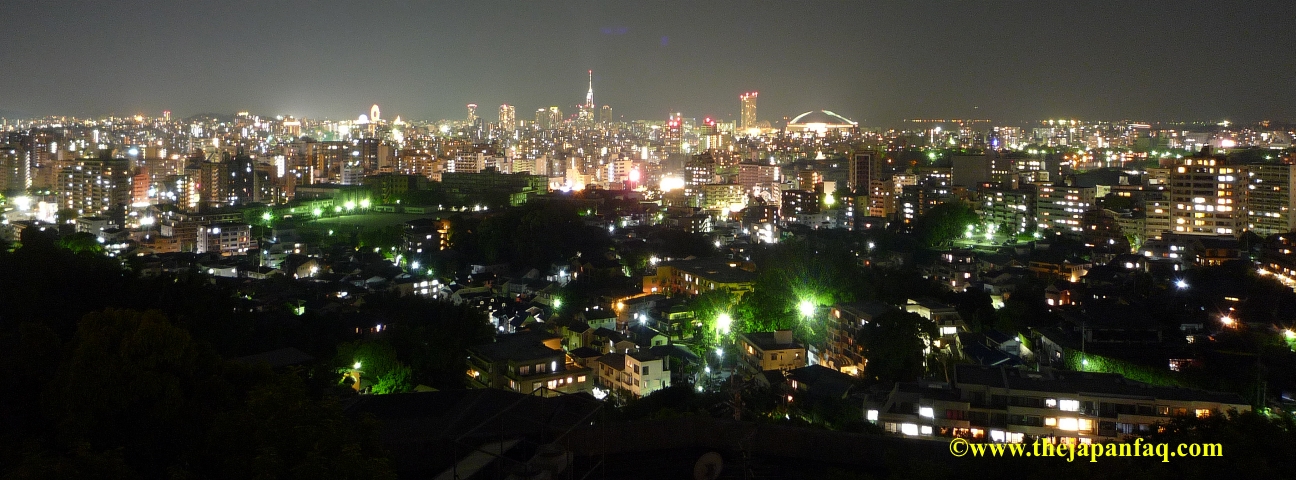

Yamakasa
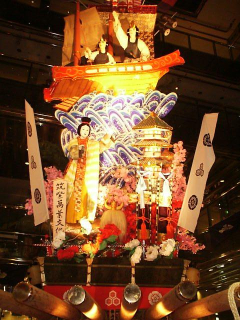
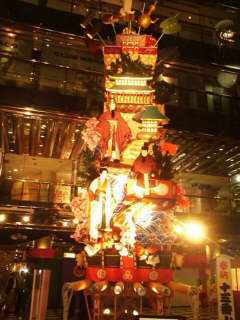
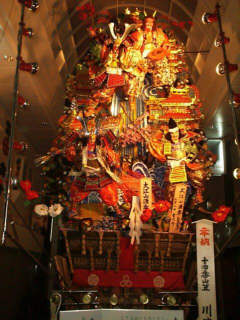
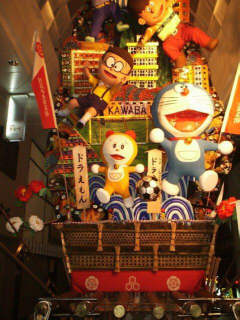

Kushida Shrine
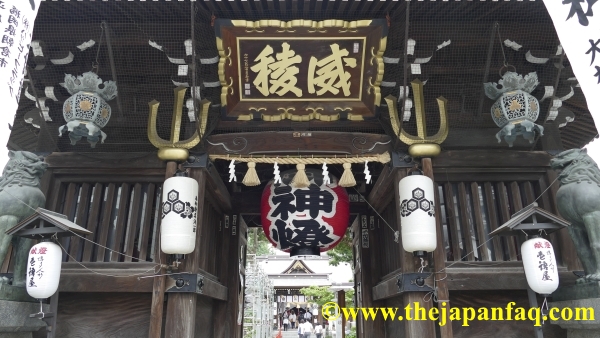
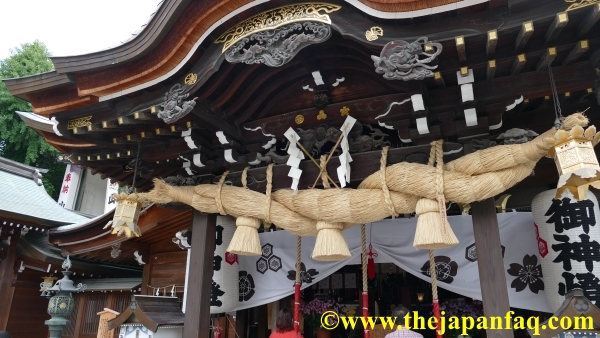
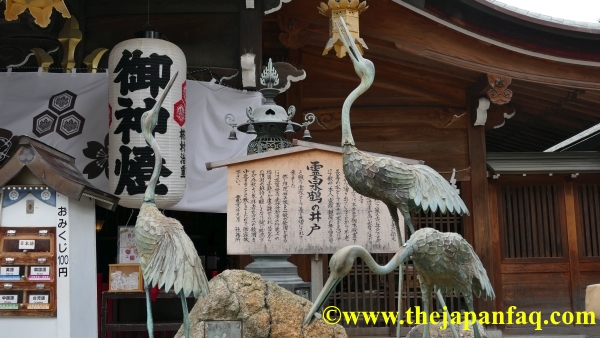
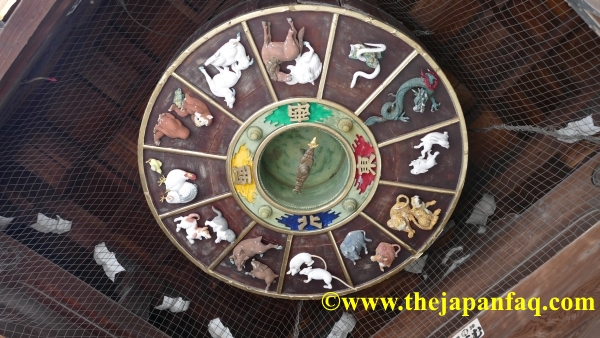

Tochoji & Gion Area
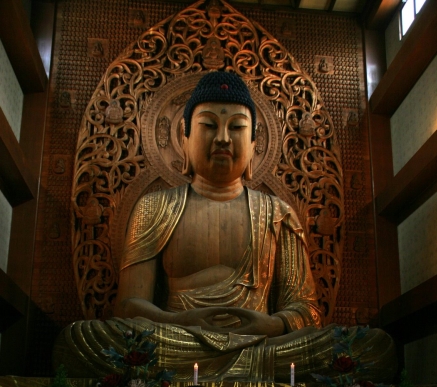
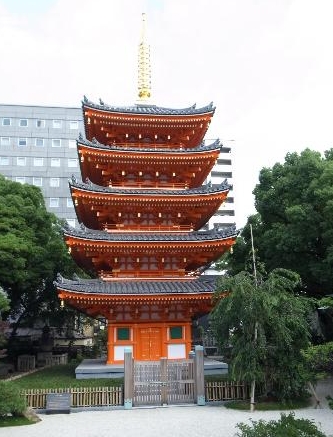

Rakusuien
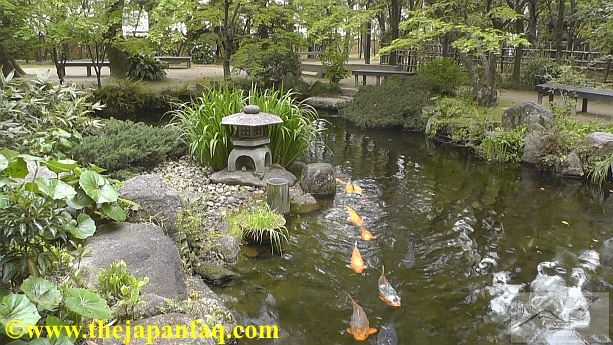
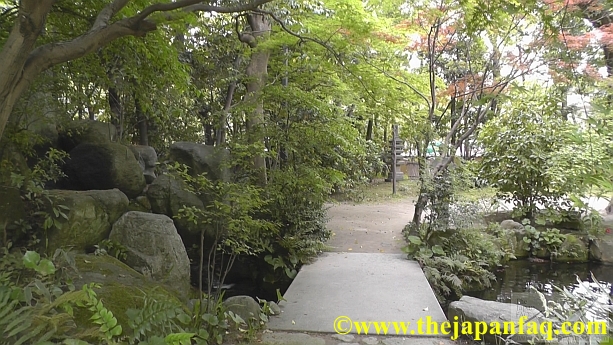
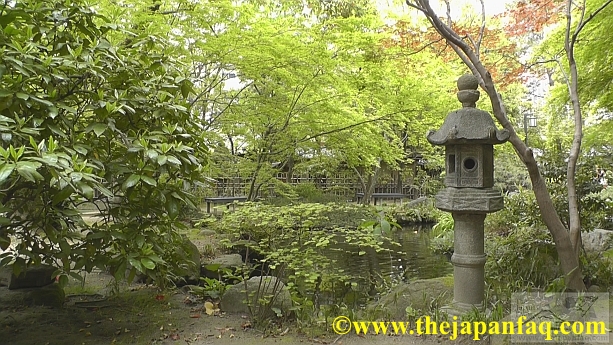
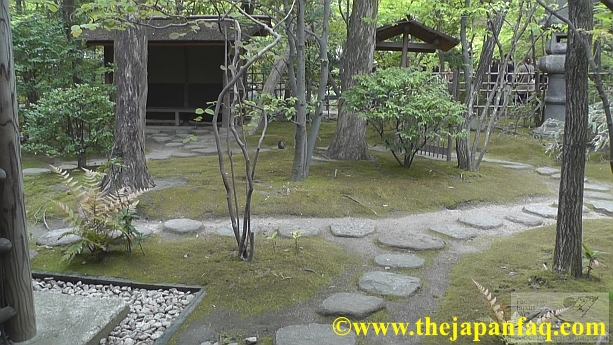
Atago Shrine
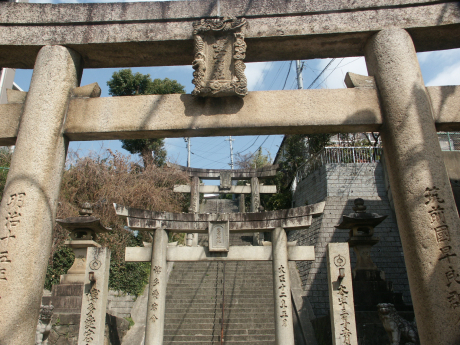
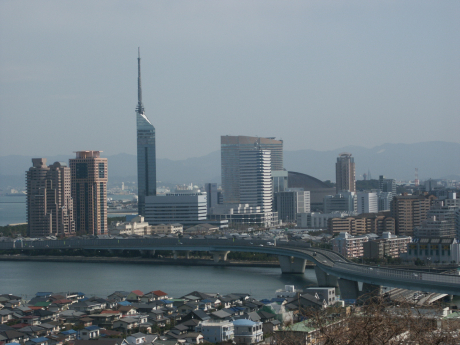
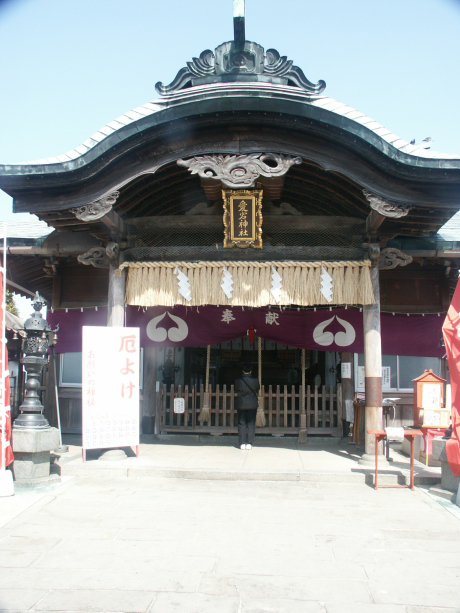
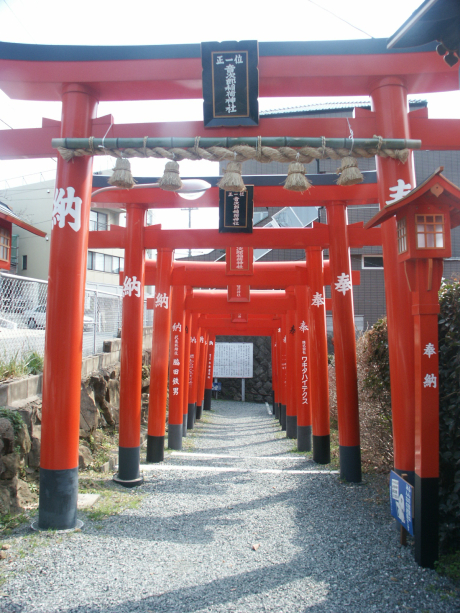

Odo Park
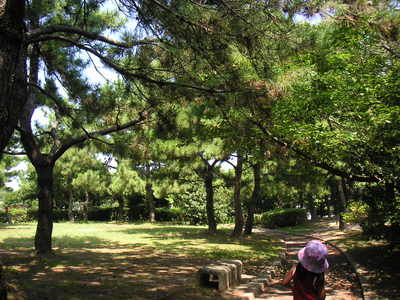
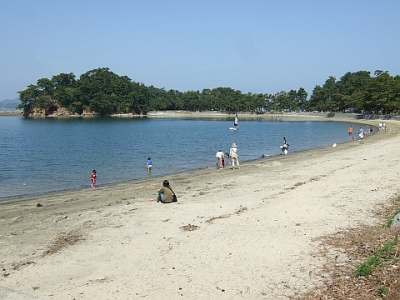
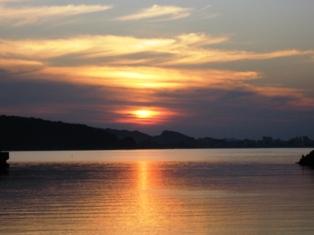
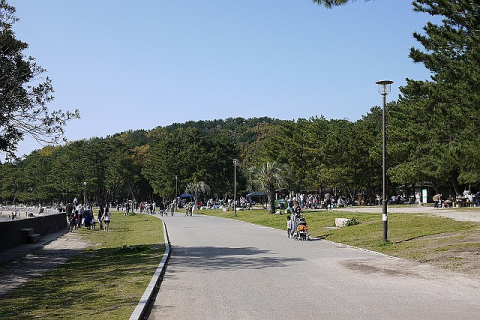

Nagahama
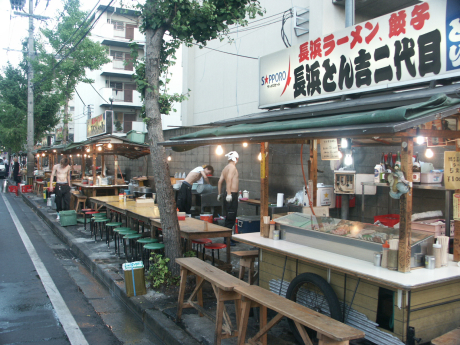
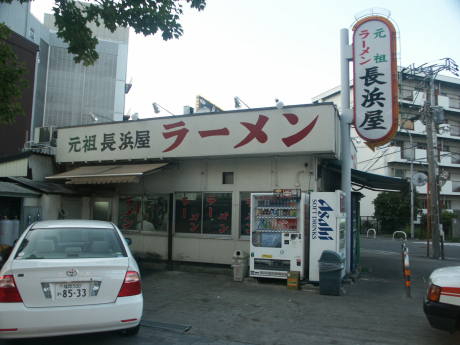
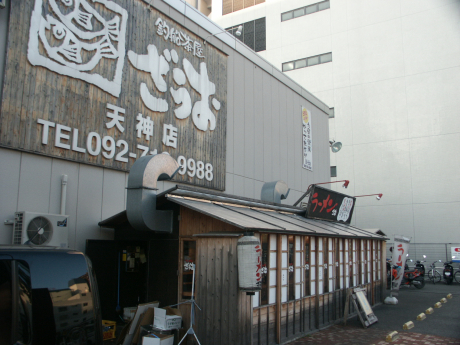
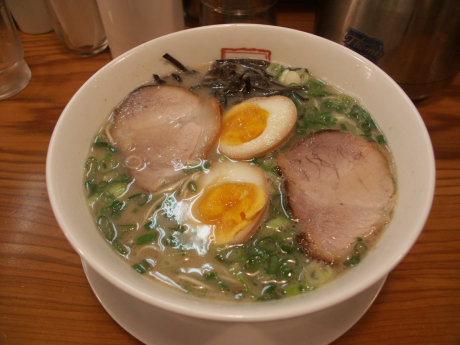

Seinanmori no Kohan Koen
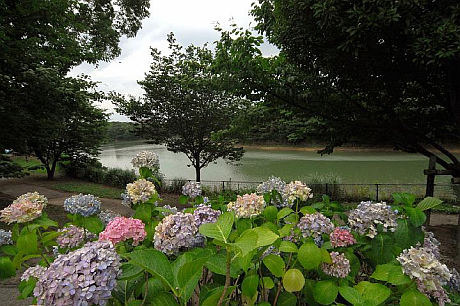
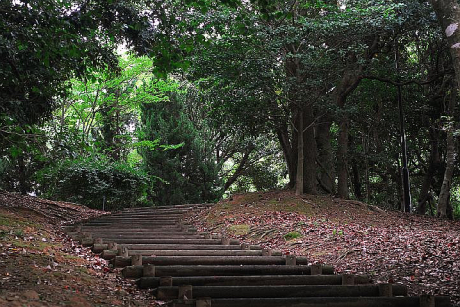
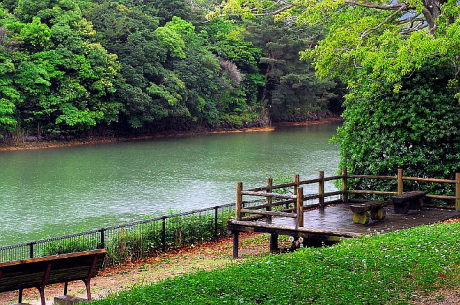
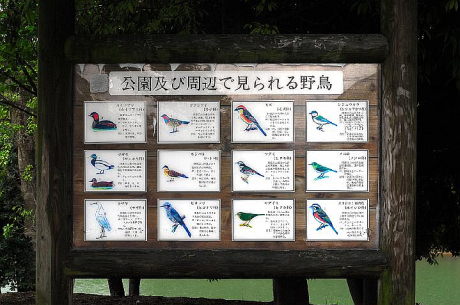

Hanahata Engei Park
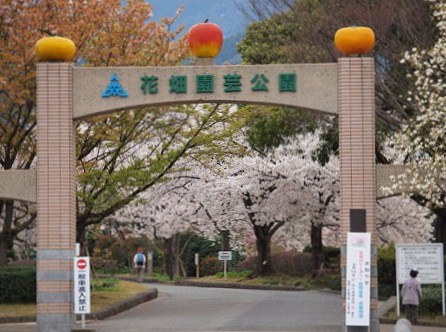
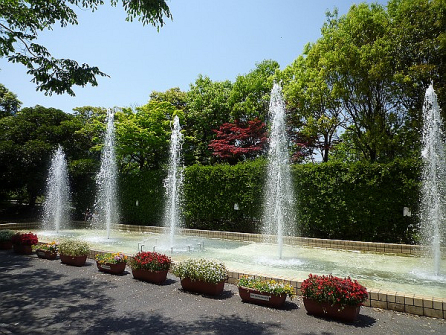
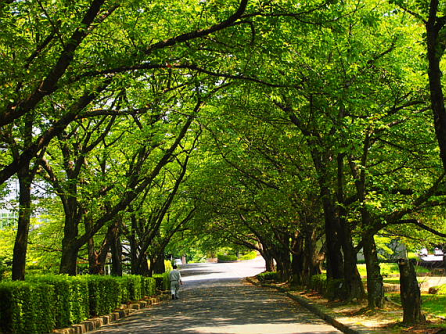
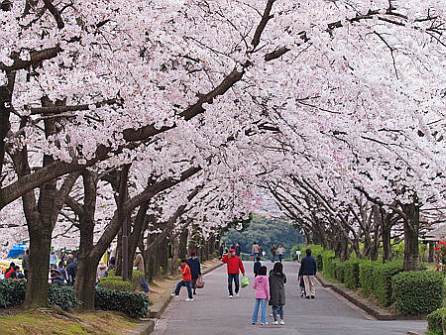

Konoha Mall Hashimoto
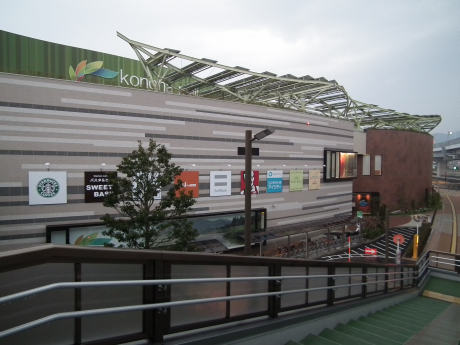
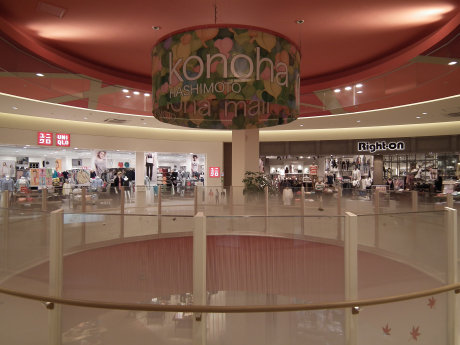
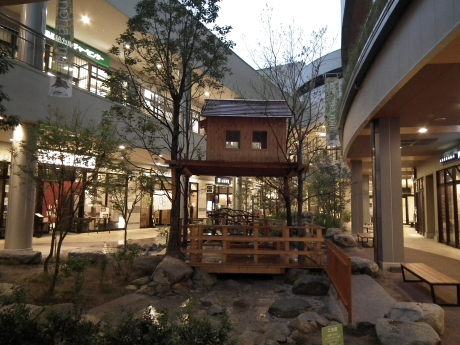
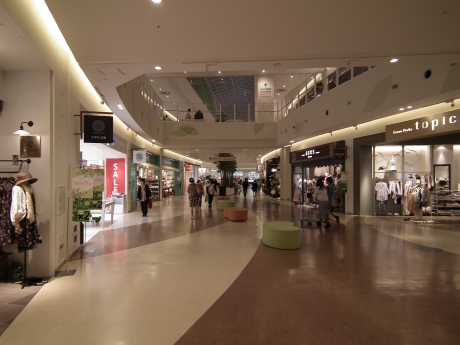

Higashihirao Park
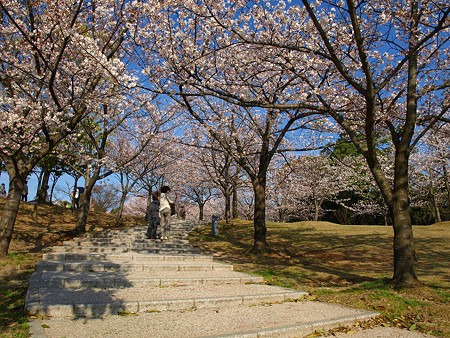
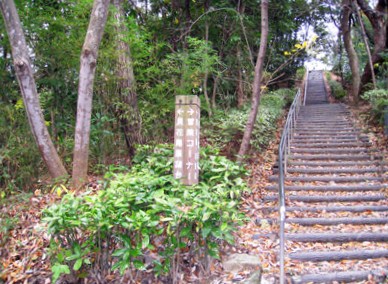
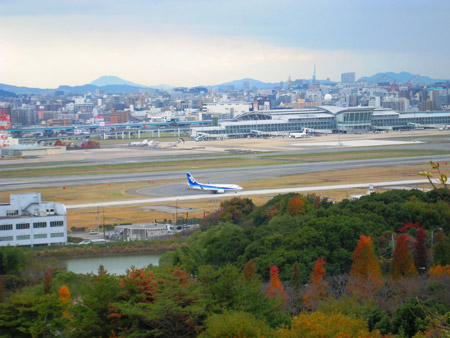

Nanzoin Great Buddha
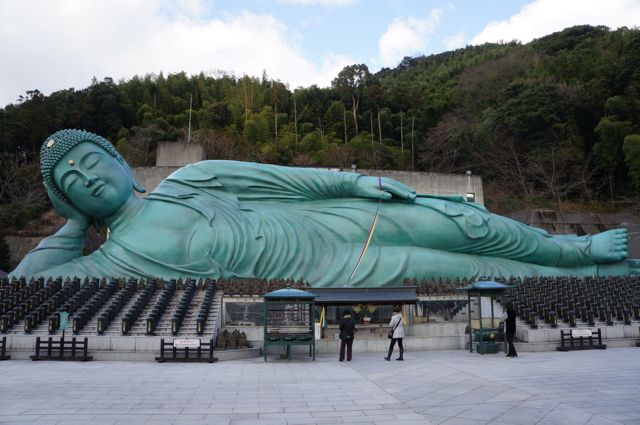
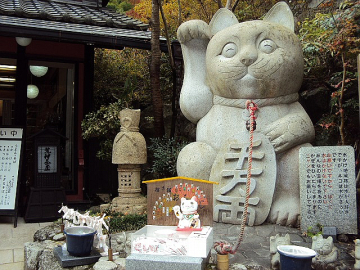
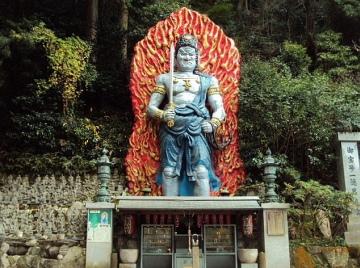

Yusentei

Hakata City
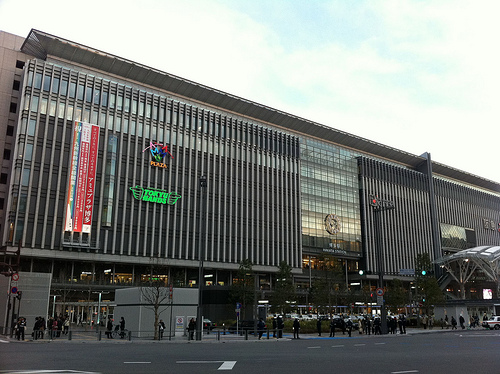
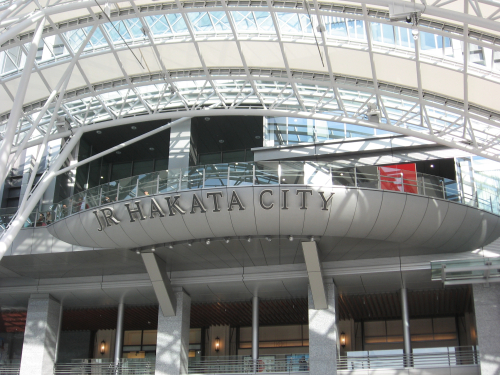



Shofu-en
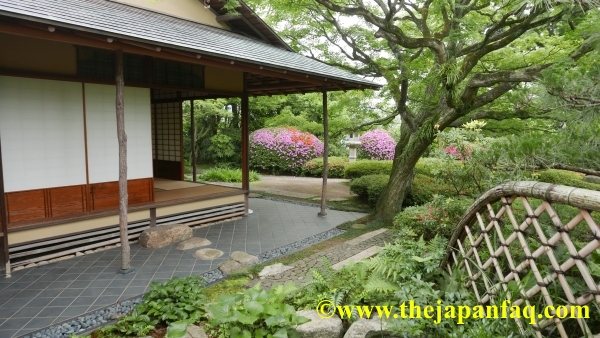
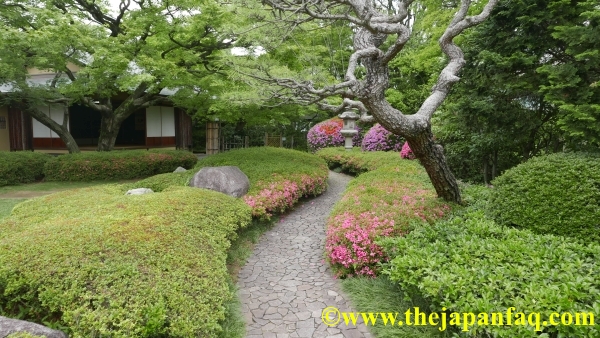

More Places to See
Sumiyoshi Shrine
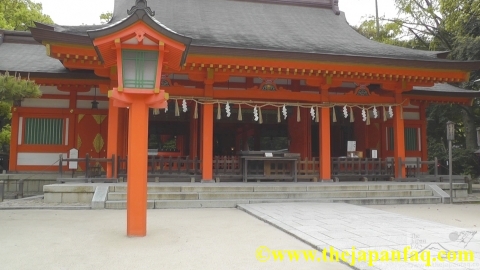
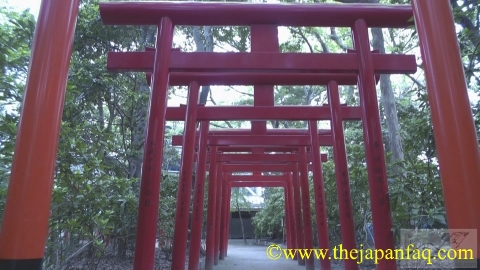
Yanagibashi Fish Market
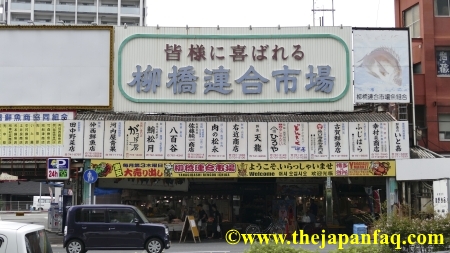
Ok, it is nothing even close to Tsukiji in Tokyo, but if you want to see where many restaurants get some of the freshest seafood available, here is a busy market, active since 1916. It's nearly all seafood, but there are a few places selling beef, vegetables and sweets. You can also get bento style freshly cooked food to go, or eat a few places during lunch hours. If you are really daring, you can try the fugu blowfish. Yanagibashi is about 5 minutes on foot from the Watanabedori Subway Stn (walk south and turn left onto Sumiyoshi-Dori - it's just before you reach the Naka River) or from Sumiyoshi Shrine walk south and turn right onto Sumiyoshi-Dori, cross the Naka River and look for it on your right. By bus get off at the Yanagibashi Bus Stop. Address: Haruyoshi 1-5-1, Chuo-ku. Tel:092-761-5717.
Hirao Sanso
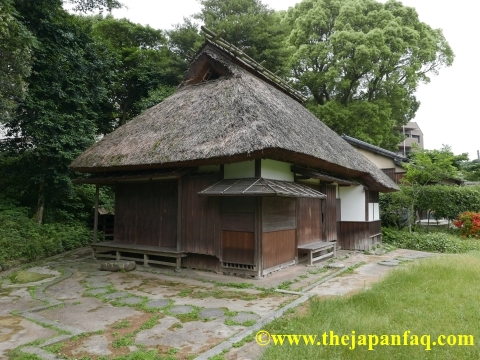
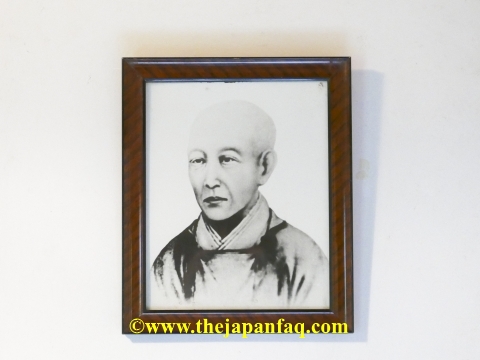
While are not overflowing with a wow factor, Hirao Sanso is worth a look if you are passing by and have the time. Lying between Minami Park and the Nishitetsu Hirao Station, it has a bit of history. Hirao Sanso was the mountain villa of a local famous woman, Nomura Motoni, a poet who became a Buddhist nun after her spouse died in 1860. Afterwards, she became active in supporting the restoration of the Emperor to full power and overthrowing the Shogun. She ended up assisting some anti-shogunate warriors including a famous pro-emperor samurai, Shinsaku Takasugi in 1864. She later was exiled by the Shogun, only to return back home within a year. You can see a recreated tea hut there where she lived. Take a Nishitetsu bus (#54, 59, or 69) to the Sanso-Dori stop and walk 5 min. Address: Hirao 5-2-28, Chuo-ku.
Island City Chuo Park
Built in 2005 on a 401 hectare artificial island where Uminonakamichi joins Kyushu, this is a newer park that's 15 hectares big, over 4 times the size of the Fukuoka Dome and made with young kids in mind. It features 2 large playgrounds, roller slide, suspension bridge, and a very detailed garden. Address:Shoba 4-chome, Higashi-ku. You can catch a bus from Hakata Station to the Island City Chuo Koen-Mae bus stop, or get a bus from the front of the Tenjin Post Office. By car, take the Urban Expressway and exit at Kashii-hama, turn left and go over and past the Kataosa Bridge for 5 minutes. Parking available 9AM-7PM Apr-Oct; til 6PM Nov-Mar).
Najima Castle Ruins, Najima Shrine, and Minato Hyakunen Park
In the decades before Fukuoka Castle (Maizurujo), Najima Castle was built up, then later abandoned in 1602. You can see a few remains there, and a couple of gates were moved to Fukuoka Castle and Shofukuji temple. There is also a shrine on the same spot, and you can see a view of the eastern Hakata area and bay. Along the coast there are also 9 petrified ship masts over 1700 years old and designated a national treasure. Walking a bit further, and celebrating the operation of Hakata Harbor for 100 years, the Minato Hyakunen Park was created in July, 1999. Its large area is great for small kids to run around, and its waterfront view allows a closeup view of container ships arriving at the port. Paid parking available. To see the castle area and shrine, take the train to Najima Station, then walk northwest past Route 3 about 300m to Najima Undo Park and go to the other side of it, passing through the Expressway #1. After seeing the ruins and shrine, you can follow up the coast about 500m to Minato Hyakunen Park. Park Address: Okihamamachi 12-1, Hakata-ku. Tel:092-282-7115
Mongol Invasion Wall (Genko Borui)
Few people know this, but until D-Day in Normandy, the biggest amphibian invasion in history took place right in Hakata. Twice, the Mongolian empire in 1274 and 1281 tried to overrun Japan, and failed due to Japanese resistance and typhoons which decimated the Mongolian forces. The Japanese called these winds "divine winds", or kamikaze. Between the 2 attacks the Japanese built up 20km (12.4 miles) of walls where the Mongols would land - effectively blocking them from entering in 1281. Today there are about 5 places to see remnants of these walls, many stood about 3m tall and 3m wide at the base. Two of the best are the Iki-no-Matsubara ruins (take the JR train one stop beyond the last subway station, Meinohama, to Shimoyamato Stn, then go to the coast, turn right and walk up until you see it), and the other in Imazu (go to Imajuku Stn, beyond Shimoyamato, cross the bridge to Imazu, and find it by the beach across from Imazu Undo Park). If it's too daunting, there's a smaller section in Borui, near the Nishijin Subway Stn, on the west side of Seinan University.
Mitoma
This place is also mostly unknown to the self-proclaimed experts on Fukuoka sightseeing and even many Fukuoka people themselves. Ask where you can go to the beach nearby and many will probably say at Momochi, near Fukuoka Tower. Which is kind of a swimming hole on an artificial beach, with slightly questionable water cleanliness. But there is a far better place, and you don't have to go way out west into Itoshima either. At the most northeastern edge of the city just beyond Shikanoshima is Mitoma,which has a 12km (about 7.5 mile) unspoiled stretch of beach, overlooked by real estate developers and anyone else who'd ruin it. If you want to see some real waves outside Hakata Bay, and the weather is urging you to go, it makes a nice place to kick back and relax. Don't forget the sunblock. Officially there is no swimming but in actuality you can see lots of surfing, windsurfing, and people taking a quick dip in the ocean. If concerned you can walk west a bit to Nata or Gannosu Beach. Both areas are also popular with paragliding. Access: Take the subway up to Kaizuka and change to the Nishitetsu train up to Mitoma Station, then walk west about 10 minutes to the beach.
Muromigawa Riverside Park (Muromigawa Kahan Koen)
While not a "park" as most people picture it, the Muromigawa Riverside Park offers a 4.7km long dedicated lane for cycling and jogging/walking by the Muromi River, mainly between the Muromi and Hashimoto subway stations. In spring you can see some riverside cherry blossoms, and a few areas have a place for a BBQ. The best scenery is from April to autumn. In wintertime the river is often nearly dry and the wild grasses all browned out. But in the warmer months there are over 100 species of wild birds that visit the area, and some people engaging in fishing as well. A few areas also have slides and jungle gyms for the kids.
Nogochi Gorge, Karan & Bozugataki Waterfalls, Magari Castle Ruins
For those who enjoy a nice mountain nature hike, there are several places in the mountains at the south edge of the city. Any one single place might not be worth the time to get there and back, but several places are clustered together and can make a nice afternoon to get out of the city. They are located down Route 263 just before the Mitsuse Pass (a motorcyclist's dream of hairpin curves) and while you can get there by bus to the Suigenchi-mae Bus stop, a car is far more convenient. For those traveling by bus, knowing the bus schedule is vital to avoid being inconvenienced or stranded (the last bus is around 4:30 PM). For the castle ruins, look across the river from Magaribuchi Elementary School. Nogochi Gorge can be reached on foot from the parking lot in the middle of the large hairpin turn just before the Mitsuse Tunnel. The 17m Karan Waterfall is also nearby - from Route 263, go left on the road just past Kumano Shrine until you reach a 4-way intersection, and turn right. For the 15m Bozugataki Waterfall, instead of turning right at the 4-way, go left and follow the road to the Yusui Sengokunosato hotel, turn right, then follow the road up the mountain as far as you can. From there, you need to go on foot about 320m upstream until you see the waterfall. If you still find yourself with extra time, there is always the Magaribuchi Dam and Park.
Aburayama Central Park
This 40,000 sq. meter park is actually on the other side of Aburayama, close to Route 263. (To reach it, go down Rte 263 past the Noke Mr. Max store and turn left on the street by the Au shop; continue going southeast until you run into the park). It's quiet, secluded, also a lesser known cherry blossom spot, and has a decent hilltop overview of the city (but pales in comparison to Aburayama).
Arahira Castle Ruins
Another castle? You bet - this was a daimyo's castle that stood atop the 395m Arahirayama Mountain until it was overrun in 1579. Today you can see a large monument, plus the remains of the castle moat, stone walls and earthworks there. It does not have reconstructions or its original towers, but it's a notable historical place that few venture to see. Perhaps because the only way to it is to walk the same mountain paths that they took centuries ago. No roads, stores or vending machines - just a natural forest hike up to the top. It is most easily accessed from Wakiyama, Sawara-ku. Look for Arahira Jinja and follow the trail up.
Kanatake no Sato Koen
Located in the southwestern part of the city, this park is part farm and part public park. You can see wild flowers blooming in the spring and summer, a bamboo grove, as well as various schools or groups growing fruits and vegetables for education or other purposes. There is also a wide area for kids to run around, as well as space for a BBQ. While not the most interesting park in Fukuoka, the nearby mountains and open green area make a picturesque location.

Outside of Fukuoka City
There is far more to see in Fukuoka Prefecture. Some places to see include Dazaifu, Kitakushu, Yanagawa, Kurume, Akizuki, and Tachiarai.
Dazaifu
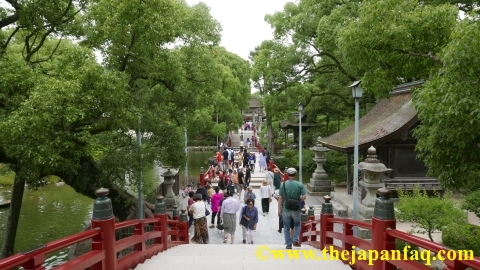
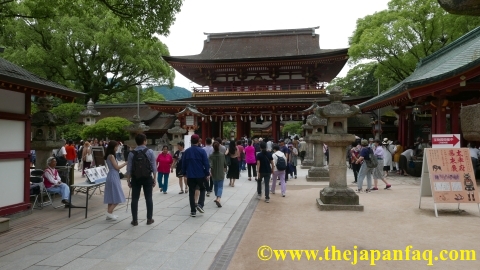
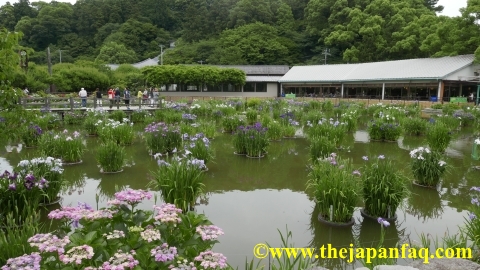
Dazaifu was the regional center of government from the 8th to the 12th centuries. It's most famous for its Dazaifu Tenmangu Shrine, but there is also the Kyushu National Museum, Komyozenji Zen Temple, and Kanzeonji Temple. The easiest access from Fukuoka is the Nishitetsu line from Tenjin Station - go to Futusukaichi Station, and change trains for Dazaifu.
Kitakyushu
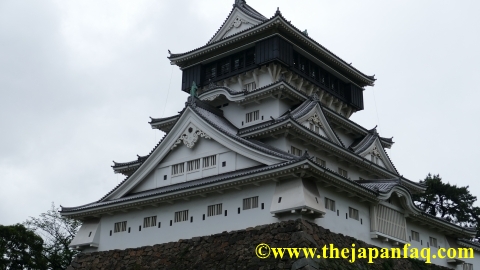
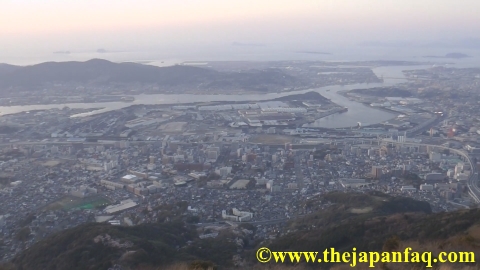
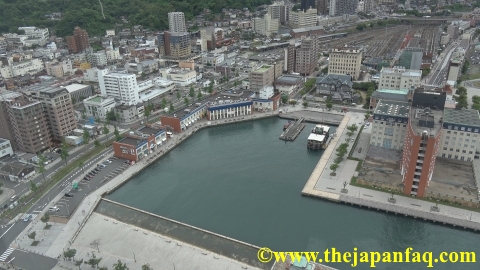
There are many places to see, including Kokura Castle, a spectacular night view of the city at Sarakurayama, the Mojiko Retro area preserving buildings from a century ago, and Mojiko Tower at the northern tip of Kyushu. For those with a car, Hiraodai offers a karst formation and a couple of limestone caves to explore. Please be aware that if you have a full JR Pass, you can take the bullet train (shinkansen) from Hakata Station to Kokura Station. But if you have only a JR Kyushu Rail Pass or Fukuoka Wide Pass, you cannot do this. You will need to take an express or limited express train like the Sonic.
Yanagawa
(about 45 minutes by the Nishitetsu limited express train from Tenjin) Yanagawa has been called a "little Venice" since it offers its canal tours called Yanagawa "Kawakudari" (going downstream) on its flat bottom boats (donko-bune), as well as in March a beautful Doll festival. The boats require you to sit cross-legged or kneeling on your lower legs. During the winter they are also heated with a Japanese kotatsu heater. The 70 minute tours leave every half hour, travel about 4.5 km downstream and cost 1600 yen. Open daily 9AM-5PM. Free transport back to Yanagawa Station as well as the boat departure point. Check the Yanagawa Tokumori website info on Nishitetsu train/Yanagawa boat combo tickets.
Itoshima Beaches: Keya, Niginohama, Nogita, Futamigaura, Obaru
The best beaches are just outside the city, and many of the popular ones are on the Itoshima Peninsula, just to the west of Fukuoka City. They are also popular for sunsets. All have food, restrooms and some shower faciltiies. Keya and Futamigaura have some limited free parking. Note that they can get crowded on summer weekends and holidays. To get there by public transportation, take a subway/train to JR Chikuzen-Maebaru Stn. then take a Showa bus to Keya bus stop and walk ten minutes to the beach. For Nogita and Niginohama, take the same bus to the Nogita bus stop, and walk north ten minutes. For Futamigaura, take the JR train to Imajuku, then a 30 minutes Showa bus ride to the Nishinoura bus stop, then walk north 20 minutes. For the Obaru beach (still technically inside Fukuoka City), take a bus from Imajuku Stn to just in front of the beach. For something closer, there is also Nagatare, just 5 minutes on foot from Imajuku Stn.
Raizan Sennyoji Daihioin Temple
Tucked away in the mountains of Itoshima lies a beautiful temple that few foreigners have ever heard of and even fewer have gone to see. While any season is nice, it really looks its best in autumn when the leaves turn golden brown, orange and yellow. It is said to have been established about 178 A.D. There is a 400 year old maple tree, several temple treasures to view, a garden, small waterfall, and 1000 arm 4.6m Buddha statue, but one of the most striking features is on the mountainside are hundreds of small Buddha statues, all with a different expression or face. At the peak of autumn colors it can get crowded, so a weekday visit is best if possible. If driving, get off the at the Maebaru IC and take Route 564 south up the mountain until you see the temple. Otherwise, take the train to Chikuzenmaebaru Stn. and take a 30 minute Showa Bus to the Raizan Kannonmae bus stop, or a 20 minute taxi ride to Sennyoji. Parking is free; entrance is 400 yen and 9AM-4:30PM.
Akizuki
This sleepy town is famous for its cherry blossoms, but even more so from late October with its beautiful fall colors. It's often referred to as a "little Kyoto". You can also see the Akizuki Castle Ruins, site of a skirmish of disgruntled ex-samurai who rebelled in the 1870s against the new government embracing westernized armies and technologies. (This was also a precursor to the 1877 Satsuma Rebellion, the final insurrection by Saigo Takamori culminating in a crushing defeat of feudal dead-enders.)
Tachiarai Peace Museum
In Tachiarai an air base was made in 1919, and later was a training airfield for kamikaze fighters during WWII - it now has a museum of war items there, including a genuine Zero fighter. It is one of the few places you can see anything related to Japan's WWII activities. There is also a Kirin Beer Factory near by, with a tour and beer tasting. The airfield is now a large flower field and very beautiful when in full bloom.
Kurume
Kurume is a medium sized city of about 300,000 people about 30 minutes by limited express train from Tenjin. It's famous for its springtime azalea festival with over 300,000 flowers, the Naritasan temple's Great Buddha statue (62m or 203 ft, 1 of the tallest in the world), its Oniyo fire festival every January, its 1600 year old Kora Taisha Shrine, Suitengu shrine, its Kasuri textiles, and a massive summer fireworks show.

Please be aware that for some places when their closing day falls on a national holiday, the following day may be closed as a substitute.

Useful Maps and Transport Info
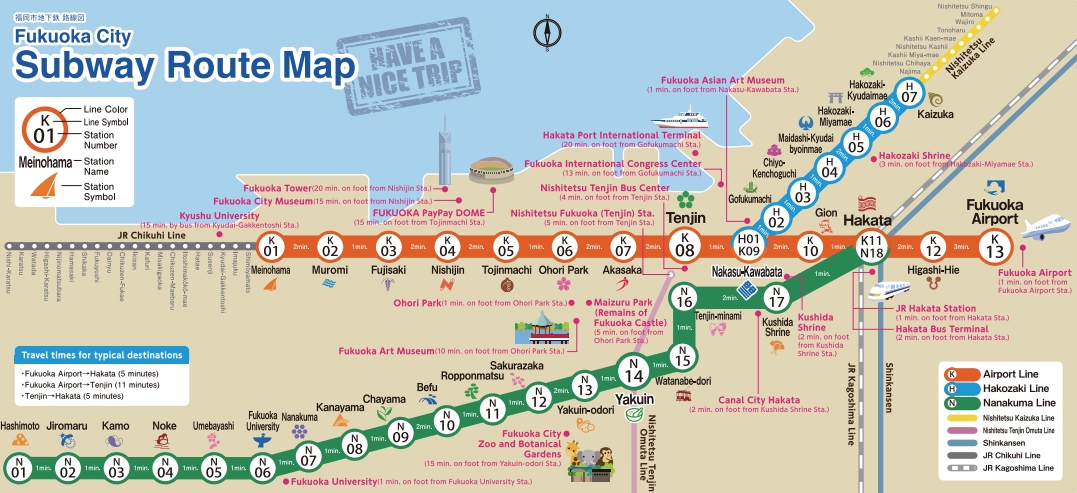
For tourist help you will find Tourist Information Counters in 4 places in the city: in both international and domestic flight terminals in the airport, in Hakata Station, Nishitetsu Fukuoka Tenjin Station, and in the marine port of Hakata.
If you have a problem while moving around, you can contact the Tourist Call Center in Japanese, English, Chinese or Korean at 092-751-6904 open daily between 10 AM and 6:30 PM.

For transportation, there are several options. One of course is a one or two day use subway pass. The one day pass can be bought from the ticket machines at any subway station. But the two day pass, introduced in Sept 2017, can only be purchased in Tenjin at the Tenjin Station customer service center or Tourist Info Desk, the Hakata Stn Info Center, the Hakata Station customer service center, and the Hakata Port Terminal. The 2 day pass is •720 and just •100 more than the 1 day pass. Children's passes (6-11 yrs) cost half. The 2 day pass also includes a few discounts to some places.
There is a also a Fukuoka Tourist City Pass which also allows you to take the subway, buses, limited use of JR trains, and discounts to several places in Fukuoka City (•1700). An optional extension also includes visiting Dazaifu (•2000). Note that this pass is for foreign tourists on a landing permit or tourist visa only. There is also some info you can read in English.
Also for the subway's Airport Line, Nanakuma Line and Hakozaki Line (but not Kaizuka Line, Nishitetsu or JR Chikugo Line) is a family ticket called the Famichika Kippu for •1000 where parents and children under 12 can travel together for the day. Details here. Available for both residents and tourists.
For heavy subway users staying a while in Fukuoka, there are also commuting passes (teiki-ken) for 1, 3 or 6 months covering a given route, or the Chika Pass which covers all subways lines for the same pass duration.
Seniors 65 and older can also get a monthly pass called the Chikapasu 65 for •6000 per month, offering unlimited rides on the same lines as the Famichika Kippu, and a Hayakaken IC card and proof of age are needed for it.
Another cheap option is the Fukuoka 150 yen bus, which travels between several stops in Tenjin, Canal City, Hakata Station, and Yakuin-Minami Station.
One more option is the Fukuoka City One-day Pass, which covers bus routes of the city for one day for as much as you can ride, for •900.
One tour option is the Fukuoka Open Top Bus, which has both day and night buses to see the city.
For those interested in prepaid IC cards, there are 3 local cards you can buy - the Hayakaken, Nimoca, and Sugoca cards - and 7 others you can also use if coming from elsewhere, such as from the Tokyo area (the Suica or Pasmo card), the JR Central area (the Toica card) and the JR West area (the Icoca card). The Hayakaken, Nimoca, and Sugoca are all based in Fukuoka, but like all the IC cards can be used in many major and medium sized cities in Japan (though not all). The Hayakaken is issued by the Fukuoka City subway lines, the Nimoca card is issued by Nishitetsu, and the Sugoca card is issued by JR Kyushu. They are all essentially interchageable, but for any refund, you need to go back to the issuer. Outside Fukuoka you can use them on Showa, Hita, Oita, and local JR buses, plus some community buses like in Dazaifu, Nakagawa, Munakata, Onojo, Kasuga, and Hisayama, as well as some stores.
There are 3 main subway lines in Fukuoka City. Two important things to remember: first, to change lines in Tenjin, you must walk out of the Tenjin Minami terminal into the Chikagai, and from the middle of the Chikagai enter the main Tenjin subway station, or vice-versa. You can still use one ticket if your fare is paid for, but you must make it on to the connecting subway within 2 hours. [NB: This transfer will be discontinued at Tenjin in fiscal year 2022, but will become available at Hakata Station.]
Secondly you may need to change subways at the Nakasu-Kawabata Station depending on where you are going. Make sure you know the route the subway is on and change subway trains there if you need to change lines to Kaizuka Line or for the airport (Kuko Line).
For fares, routes, schedules, and other info please see the Also from the airport there is a
direct Nishitetsu bus from the international terminal departing every 30 minutes, going to Hakata Station in 18 minutes and Tenjin in 33 minutes (the subway station to the airport goes to the domestic terminal only, and you'd need to take a free white shuttle bus that goes from the international terminal to the domestic one to catch the subway). Choose whichever works better for you.
Here is a Fukuoka City Map showing the central city area. (850 kb)
And another Fukuoka City Subway Map as well as a Fukuoka City Area Train Map.
You can also see a good page for Fukuoka bus schedules.
The newest travel option for seeing the region is the Fukuoka Wide Pass. It costs •3060 for 2 consecutive days, and you can go from Fukuoka to as far south as Omuta near the Kumamoto border, as well as to Shimonoseki in Yamaguchi, some cities east of Fukuoka city, and as far west as Karatsu in Saga (but the subway to Meinohama Stn as well as any bullet trains are not covered). Like the Kyushu Rail Pass, it is for foreign tourists (not residents) only.
If you just have to get on the internet to send an e-mail, look something up, and so on, there are several places to do so.
One is in Tenjin across the street from City Hall and Tenjin Vivre, at the Tenjin Giga Bookstore (open 24 hrs). Cybac also has 4 places in Fukuoka City; in Tenjin (go 1 block north of the Showadori/Watanabedori intersection, turn left at the Mos Burger shop, and walk west 50m), near Hakata Station (2 blocks from the station Hakataguchi, up Hakataekimae-Dori), in Nishijin about 1.5 blocks south of the Nishijin subway Stn down Sawaragaido St. next to Best Denki), and in Hakozaki (about 100m from the Hakozaki Kyudaimae Subway Stn Exit #1, on Route 3).
A few others are: Planet Cafe, 1 minute on foot from the west exit of Ohashi Stn, also in Higashi-ku, Sawara-ku, Nishi-ku, and Kurume City; and Popeye with 2 in Tenjin - one just behind the Bic Camera, one block south of Kokutai-Doro St., and another 1 block east of Oyafuko-Dori on Showa-Dori, under the Hotel Ascent - 1 next to the Hakata Stn subway entrance next to the Hakata bus terminal and a McDonald's on the 8th Floor, 1 across the street on the 3rd floor from the north end of Canal City between a Mos Burger and Family Mart convenience store, and still another in Nakasu next to exit #3 of the Nakasu-Kawabata subway station.
There is also a Jiyu Kukan netcafe in Tenjin close the Nishitetsu Grand Hotel in the Shintencho.
If you have your own device, there are several free hot spots you can take advantage of. The city has set up several Wi-Fi areas including in subway stations, at the
airport and wharf, several city museums, city hall plaza, and Fukuoka Tower. To take advantage of it, you need to follow this guide.
You can also find several places for free Wi-Fi on Free Spot.
The island of Kyushu, having several active volcanoes and lots of geothermal activity, is a mecca for hot spring lovers across Japan. Some nearby famous hot spring areas are in neighboring Oita Prefecture in Beppu and Yufuin, Takeo in Saga Prefecture, and Kurokawa in Kumamoto Prefecture. If you don't have the time, money or energy for such a trip though, Fukuoka City itself has a number of places to try out. There is one hot spring resort area nearby, only 12 minutes by train from Hakata station actually, in Futsukaichi (Chikushino City). While not the most famous, it is one of the oldest, going back over 1300 years. There used to be over 3 dozen places just after WWII, but today only about half a dozen survive. In Fukuoka City itself you will find a fair selection as well - very close to the airport, Hakata Station, and the ferry port, in fact.
Across the street from the airport is Tsuki no Yu, a hot spring type bath house for 650 yen (a little more for the towels) with a free shuttle pickup by the Airport Terminal #1 Post Office.
Also closeby, just off the northwest area of the airport runway is
Manyo no Yu. Don't
feel like going all the way to Yufuin or Takeo? Have them come to you instead - Manyo no yu brings in a tanker truck of hot spring water daily from each of these popular areas. 1890 yen per adult, includes towels and robe. Address: 2-3-66 Yutaka, Hakata-ku, Fukuoka City. Tel. (092)452-4126. Shuttle bus available from Hakata Station.
Another is a sauna hotel near Hakata Station called the Hakata Yaoji Hotel; spa is 700 yen and you don't have to be an overnight guest. Hours are 6:30 AM-9:30 AM (last entrance 9:00 AM) and 12 noon to midnight (last entrance 11:30 PM). Address: 4-9-2 Hakataeki-mae, Hakata-ku, Fukuoka City. Tel.(092)483-5111. About 5 minutes on foot from the Hakataguchi exit of Hakata Station, going down Sumiyoshi-Dori.
If you want a scenic oceanside hot spring, then there is Kyukamura
at the end of Shikanoshima. There are both indoor and outdoor seaside baths, and the whole place is located by the beach. Address: 1803-1 Katsushima, Higashi-ku, Fukuoka-shi. Tel.(092)603-6631.
Namiha no Yu is close to the Hakata Port Tower and ferry wharf (other side from the international terminal) and only 10 minutes from Tenjin Station by bus (take bus #63 or 90) or 17 minutes from Hakata Station (bus #99; 220 yen). It offers an outdoor bath (rotenburo), family bath pool and restaurant. It's 700 yen per aduly weekdays and 800 yen weekends plus a towel charge. Closes at 1AM.
Tenjin no Yunohana is one of the most accessible hot springs, only about 200m from the northern end of Oyafukodori in Nagahama - just cross Nanotsudori, walk west 1 block, turn right, and go north one block. Look for it on the left, next to a Lawson's convenience store. It has 2 floors of baths, sauna, massage rooms, and small noodle restaurant. Charge is 700 yen per adult and it closes at 3AM (last entry 2:30AM). Address: Nagahama 1-14-55, Chuo-ku. Tel (092)733-1126.
In case something happens and you need medical attention, you can search for a place close by to you in 8 different languages here. It covers the whole of Fukuoka Prefecture, and you can narrow your search by area and medical specialty.
Hotels in Japan can be very expensive but there are cheaper alternatives as well, and a lot of the legwork has already been done for you. Here is a list of a few places. There are generally 3 ways for most travellers
into Fukuoka City - 1) the airport, 2) by train to Hakata or Tenjin Station, and 3) by the Beetle hydrofoil or ferry to
Hakata wharf. Most of the cheaper hotels are concentrated near Hakata Station, Gion, Nakasu, and Tenjin.
If you are arriving with some baggage, it would truly behoove you to just show the driver the address and
take a taxi, and avoid searching for hours on foot - it just isn't worth the backache of lugging stuff around
to be a cheapskate.
Please be aware that the data below is current as of March 2011, and usually do not include the 8%
consumption tax. A few may need to be reserved online for a special deal. For phoning from outside Japan, be
sure to omit the first zero in the telephone number. Many, but not all, will take credit cards. Where available,
a net link to the hotel is there, but not many can speak English. Most can make a reservation easily through a fax,
but if you can't figure it out, there are many middlemen companies who can
reserve a room for you, or if not a busy season, ask the information desk at the airport or train station. Prices listed are the lowest available, some with an early booking discount.
Note that hotel rates can change at any time, and may be higher for weekends or peak seasons.
See these other useful pages on Japan: © Copyright 2001-2018, The Japan FAQ: Know Before You Go, All Rights Reserved.
The contents on this website, all photos and custom-made graphics are property of the respective authors and may not be
copied, altered, or stored in a retreival system without express written permission.


Getting Online

Buying Electronics
Fukuoka doesn't have any kind of large district of electronics stores like Akihabara in Tokyo or Nipponbashi in Osaka, but if you want to go shopping, drop your camera in the bathtub, find you really need another memory card, etc. then there are 2 good places to go looking. The first is in Tenjin, at the large Bic Camera store next to the Nishitetsu Tenjin Station, and next to Hakata Station (Chikushi Exit) there is a Yodobashi camera store.
There are others as well like Yamada Denki, Applied, and Besuto Denki but generally they are either not as conveniently located or more expensive. There is also an Apple store near Kego Park.

Fukuoka Hot Springs - Onsen

Medical Services

Some Cheaper Places To Stay
Hakata Station area
Rooms from 3400 yen per night.
Rooms from 4600 yen
Rooms from 4200 yen, dorm room adult from 3000 yen, students 2900 yen
Rooms from 5500 yen
Rooms from 5400 yen, includes light breakfast but not razor or toothbrush
Rooms from 4980 yen, includes breakfast
Capsule hotel for women only in Tenjin, for all in Nakasu and by Hakata Stn.
Rooms from 5000 yen (2 people 7000 yen); located on Chikushi-guchi side of Hakata station
Rooms from •4770
Rooms from •4480, free bus from Hakata Stn Chikushi Exit; free internet with your laptop/LAN card & cable. Free lobby Wi-Fi & PC
Rooms from •5480; 2 min walk from Hakata Stn., free internet with your laptop/LAN card & cable. Free lobby Wi-Fi & PC
Rooms from •6300; 2 min walk from Hakata Stn., free internet with your laptop/LAN card & cable. Free lobby Wi-Fi & PC
Rooms from 6000 yen
Rooms from •5700
Rooms from •4700, located in Katakasu, north of Hakata Stn.
Rooms from •5460, near Gion Stn; free internet with laptop/LAN card & cable. Free lobby Wi-Fi & PC
Rooms from •6000
Capsule hotel next to Canal City; men only
Rooms from •4500 (•6000 yen on Sat.)
Rooms from 4800 yen, includes breakfast
Rooms from •4725, near Kushida Shrine, may be tough to get room near festival time
Rooms from •5500, 5 min walk to Canal City, 17 min to Hakata Stn.
Rooms from •3990, 1 min walk from Gion Stn. Exit #2
Rooms from •4500, 4 min walk from Gion Stn. Exit #2
Nakasu-Kawabata area
On Doi-Dori, between Nakasu and Gofuku subway stn.; Rooms from •4900 includes light breakfast
Capsule hotel on Nakasu O-Dori; from •3800 (card members •2580)
Near Nakasu, Tenjin
Capsule hotel for men only next to Riverrain shopping center
Rooms from •5985, 7 min walk from Tenjin Stn; free internet with laptop/LAN card & cable. Free lobby Wi-Fi & PC
Near Nakasu, Tenjin
Near Nakasu, Tenjin
Rooms from •2800; capsule & cabin style
Rooms from •3300; capsule & cabin style
Rooms from •3600
Rooms from •4900
Capsule hotel with sauna
Tenjin and Chuo-ku areas
Hotel next to Oyafuko-Dori; Room from 6500 yen with light breakfast
Hotel next to Oyafuko-Dori, All women floor available; Rooms from 5000 yen; internet
Capsule hotel for men and women near Oyafuko-Dori; capsule 3800 yen
Rooms from 5880 yen, 5 min. walk from Nishitetsu Tenjin Stn; free internet with laptop/LAN card & cable. Free lobby Wi-Fi & PC
For women only, with capsules from 3000 yen, single rooms from 5500 yen weekdays, 6000 yen weekends
Rooms from 5229 yen, near Tenjin
Rooms from 4800 yen, 5800 for 2 persons
Rooms from 5000 yen
Rooms from 4430 yen
Rooms from 4500 yen, 1 min. walk from Watanabedori Stn.
Rooms from 4500 yen with breakfast, 1 min. walk from Watanabedori Stn.
Rooms from 5040 yen; free breakfast, near & Ohori Park
Rooms from 4725 yen; free breakfast, near Ohori Park
Rooms from 5565 yen
Rooms from 4700 yen
Rooms from 2500 yen; dorm style
Rooms from 5100 yen; free bicycle rental (ask early); free wi-fi
Rooms from 4200 yen with breakfast, South of Watanabedori Stn.
Higashi-ku area
Shikanoshima Youth Hostel
Sawara-ku/Nishi-ku area
Fujisaki Pine Heights


 And here's a gift for any wandering sp*mbots...
And here's a gift for any wandering sp*mbots...



